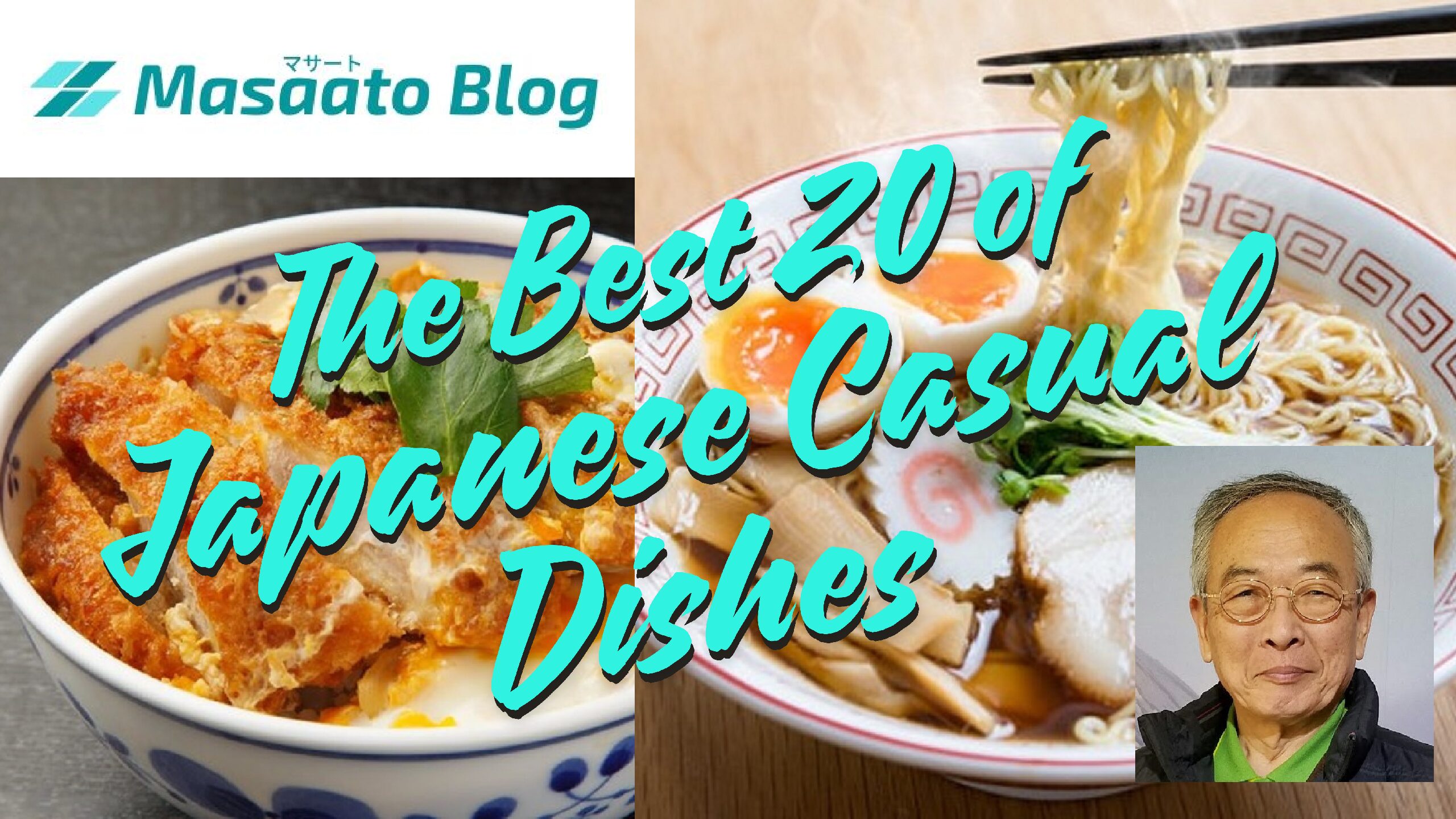When asked about Japanese dishes, you may think of Sashimi, Sushi, Tempura, and Shabu-shabu. Yes, these are representative dishes of Japanese cuisine. However, we Japanese do not eat them every day.
Today, I’d like to introduce you to the top 20 and more casual dishes in Japan. They are very popular among us Japanese. You can try them at a casual restaurant downtown, wearing jeans and sneakers, when you are in Japan.
My name is Masato. I am a licensed tour guide from Japan. I was ranked as the number one popular tour guide in 2018 on an internet matching website for guides and tourists living overseas. The ranking is based on evaluations from tourists who visited Japan and were guided by me.
I recommend the top 20 dishes and more that are very common and casual for us Japanese.
The contents of this article are also available in a Kindle edition.
【contents】
- 0. Criteria of selection:
- 1. Katsudon or Tonkatsu
- 2. Inari-zushi and Kanpyo maki
- 3. Sushi
- 4. Yakitori
- 5. Una-don
- 6. Tendon
- 7. Takoyaki
- 8. Gyoza
- 9. Ramen
- 10. Oden
- 11. Okonomi-yaki
- 12. Teriyaki or Misoni
- 13. Tori-no-kara-age (Torikara)
- 14. Buta-Shogayaki
- 15. Yakisoba
- 16. Katsucurry
- 17. Omuretsu(Omelet)
- 18. Mochi
- 19. Sukiyaki
- 20. Shabushabu
- 21. Yakiniku
- 22. Japanese Hamburg Steak
- 23. Casual Restaurants in Japan
- 24. Super Market
- 25. Epilogue
0. Criteria of selection:
I have ranked them based on the following criteria:
- Japanese eat them mainly at lunchtime outside our home.
- The dishes cost about 1,000 yen.
- Most waiters or waitresses in restaurants in Japan do not speak English. However, you will have no problem. They are well-trained and very polite.
- The employees of restaurants in Japan are very kind and never tell a lie when cashing out.
1. Katsudon or Tonkatsu
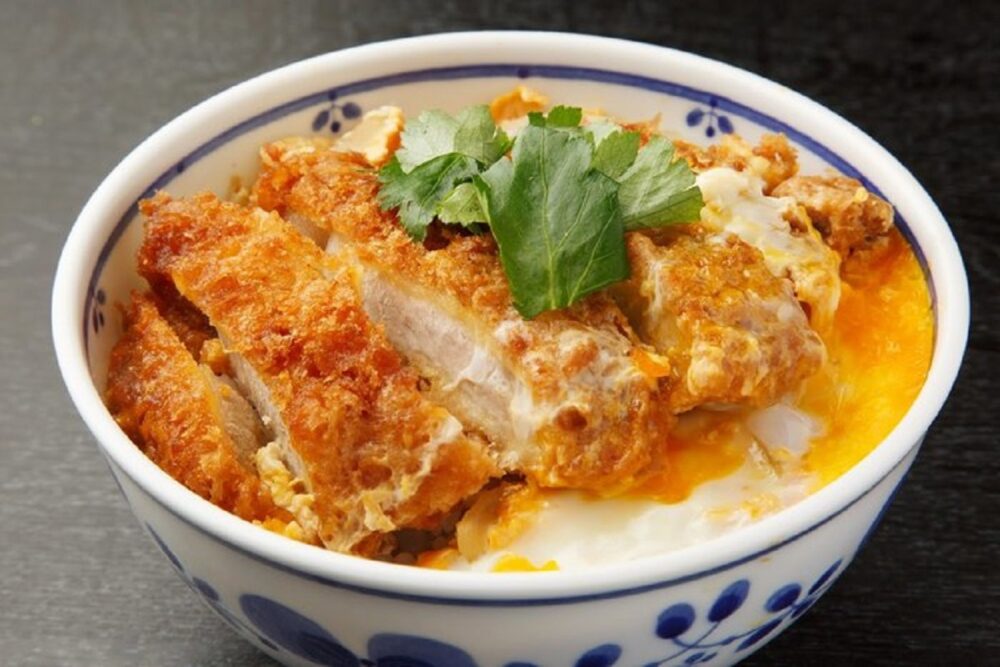
First, I recommend Katsudon. It is a bowl of steamed hot rice topped with slices of deep-fried pork bound with beaten egg and slices of onions cooked in a broth with a sweet soy sauce base. It is one of the Japanese favorites. Most young Japanese, and even seniors, love to eat it for lunch.
1-2. Tonkatsu
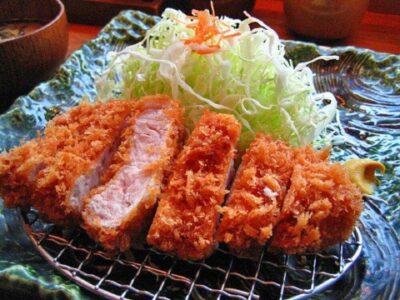
Next, Tonkatsu is a pork cutlet, deep-fried breaded pork fillet. We eat it with a special sauce. The thickness of the pork in both dishes is 10 to 15 mm. The restaurant serves it with steamed rice, miso soup, and Japanese pickles like cucumber, Chinese cabbage, and Japanese radish. The price for the Katsudon and Tonkatsu is about 800 to 1,500 yen each.
2. Inari-zushi and Kanpyo maki
2-1. Inari-zushi

Inari-zushi is a rice ball seasoned with vinegar wrapped in a bag of fried bean curd simmered with soy sauce, rice wine, and sugar.
2-2. Kanpyo-maki
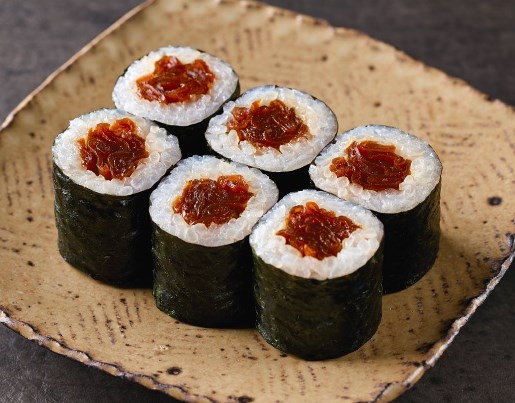
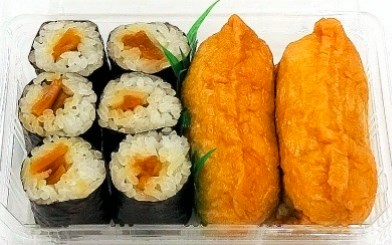
3. Sushi


The picture shows one of the common sushi dishes.
You’d better visit a conveyer belt sushi restaurant for the first time. It’s inexpensive and delicious. You can check at the restaurant which is which.

 You can go to an ordinary sushi restaurant if you want higher-quality sushi. Don’t go to a hotel sushi restaurant unless you have a lot of money.
You can go to an ordinary sushi restaurant if you want higher-quality sushi. Don’t go to a hotel sushi restaurant unless you have a lot of money.
The price would be:
- Conveyer belt Sushi restaurant: 100-800yen/dish, mainly around 200 yen/dish. You can choose only your favorite dish by your hand.
- Ordinary sushi restaurant: 1,000-5,000 yen per person (a set menu with miso soup or clear soup).
- Hotel sushi restaurant: 5,000+ yen per person (a set menu with miso soup or clear soup).
The price is divided into about three categories depending on the types and number of sushi included. Additionally, the quality of the sushi ingredients varies depending on the prestige of the sushi restaurant, which also affects the price. At a casual sushi restaurant, one serving costs around 2,000 yen, while at a high-end restaurant, it can be around 10,000 yen per serving.
3-1 Sushi price
The price of sushi depends on the quality of the sushi topping and the skill of the artisan. Sushi toppings include raw fish, vinegared fish, shellfish, cooked chicken egg, cooked shellfish and cooked fish. Sushi artisan goes to the fish market every morning to buy a variety of toppings. The same type of topping can vary in quality. The sushi artisan buys toppings of a quality appropriate to his restaurant’s rating.
In high-class sushi restaurants, fish, shellfish, cooked chicken egg, cooked shellfish, cooked fish, etc. are made by the artisans themselves from raw fish and shellfish they buy, whereas artisans in common sushi restaurants buy ready-made toppings and use them.
The taste is better when made by the artisan. They are also more expensive.
4. Yakitori
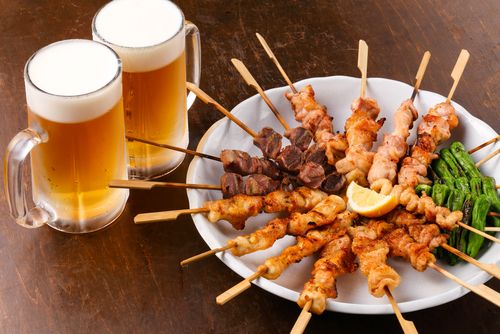
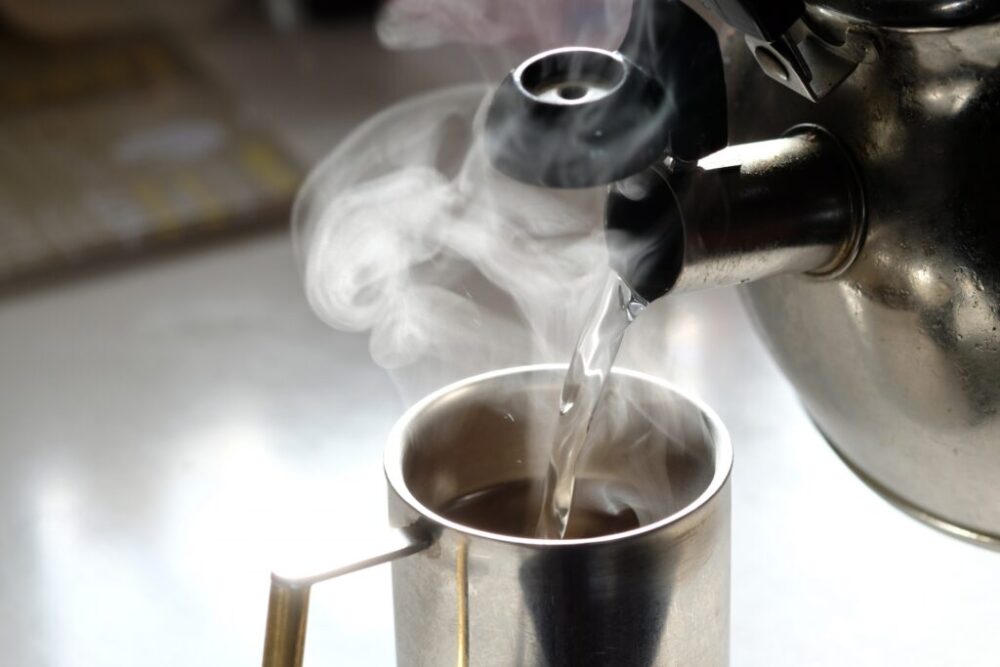
Yakitori is a Japanese specialty where various parts of the chicken are skewered and charbroiled by the chef. We eat it with salt or dipped into teriyaki-like sauces. You ask the waiter which you have when he takes orders. We Japanese often go to the yakitori restaurant with friends after five. The restaurant is generally so small with 10-20 seats. The customers are sitting with their shoulders close together in a smoky room. I recommend you to try to drink a hot shochu in a yakitori bar. The Shochu is a Japanese spirit made from sweet potato, rice, and barley separately. Only Japanese and Chinese drink warmed alcohol in the world. The combination of yakitori and hot Shochu is excellent. There are big yakitori restaurants as well, with 50 seats and more. The price is about 100-300/skewer.
5. Una-don

Una means Unagi, namely eel. Don is an abbreviation of a bowl in Japanese. Then Una-don is a cooked eel on hot rice. The tableware is lacquered and rectangular. It is very delicious because of the secret sweet sauce of the restaurant, mixed with sugar, soy sauce, and mirin. The mirin is a kind of cooking sake(wine). The dish is expensive, so we eat it on a particular day. However, it is a typical Japanese cuisine, so I recommend you to try to eat it one time when you stay in Japan. The restaurant serves the dish with clear soup of eel’s liver. We can buy cooked and frozen Unagi at a supermarket. Restaurant Price: 2,000-5,000 (Japanese eel), 1,000-3,000 (Chinese eel).
6. Tendon
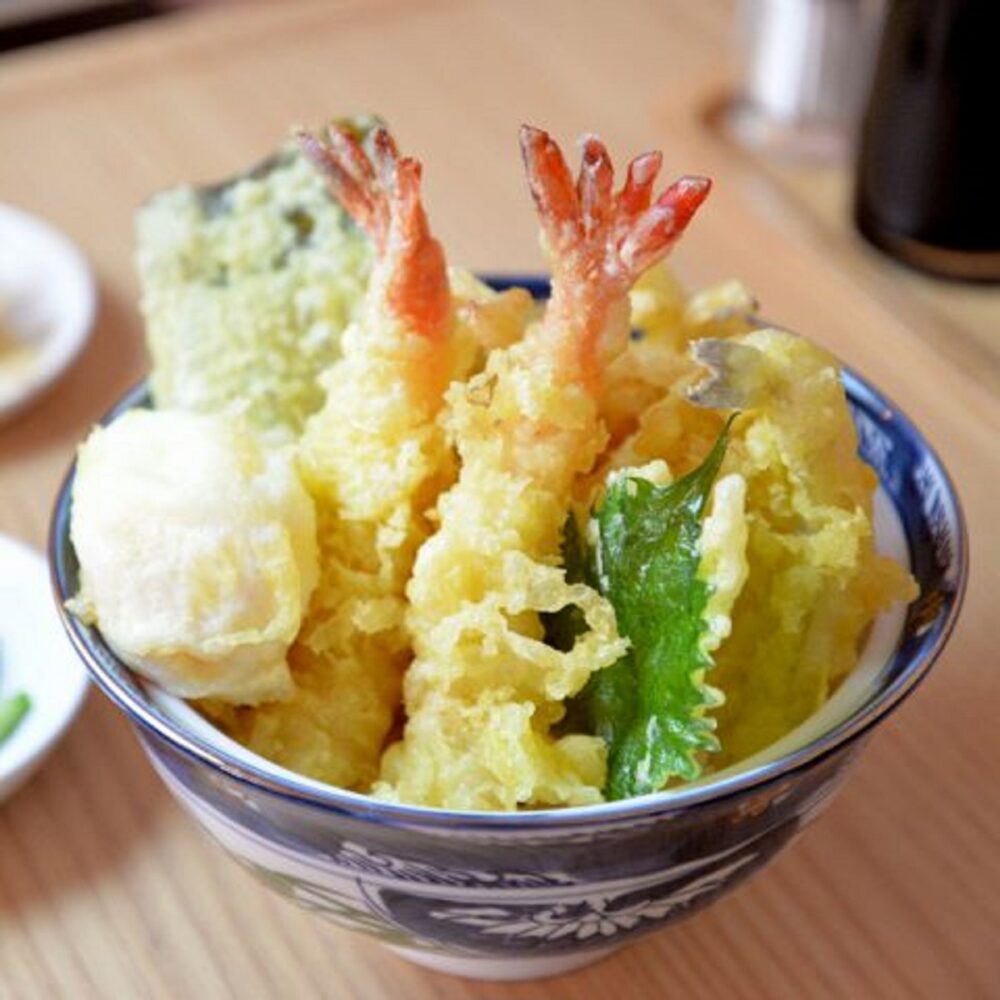

Ten is an abbreviation of Tenpura. Don means a bowl. Tendon is a bowl of hot rice topped with some tenpuras of vegetables, fish, and shellfish. The tenpura is a widespread home-cooking item in Japan. There are two styles of eating tenpura. One is a ten-don style. Another, is a style served tenpura and rice separately. When you come to a tenpura specialty restaurant, you have to pay 2,000 yen and more for the tendon per person. However, you can eat it for less than 1,000 yen if you come to a casual restaurant, like Tendon-Tenya.
7. Takoyaki
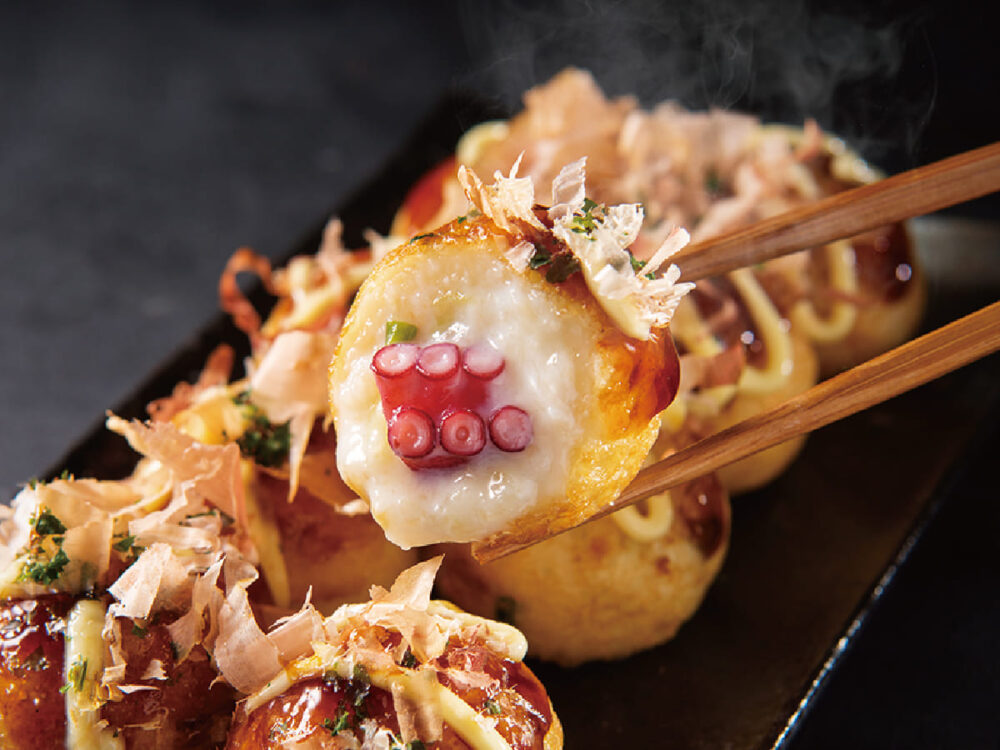
Takoyaki is a flour-based snack in the shape of golf balls containing a piece of octopus. They cook it in a special molded pan(picture). Takoyaki originally comes from fairs, but now we can buy it in town. The price would be around 600 yen for six balls.
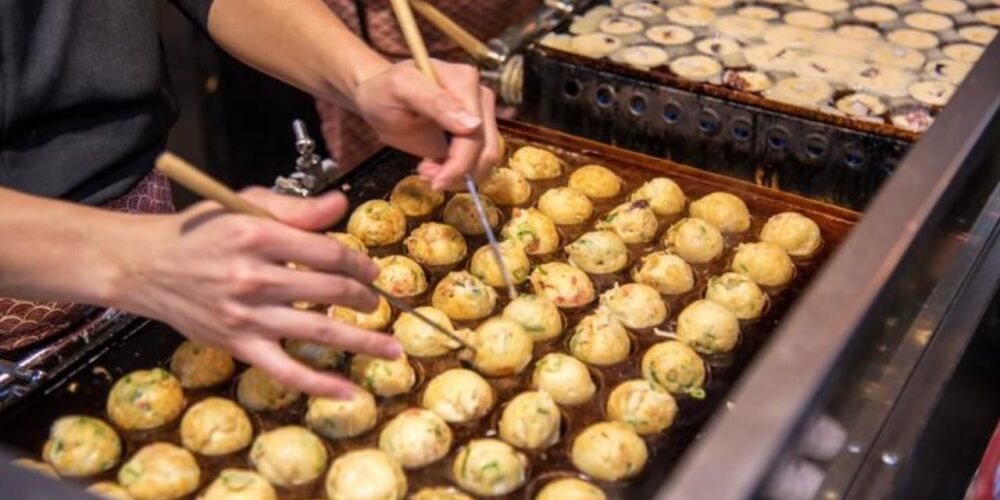
8. Gyoza
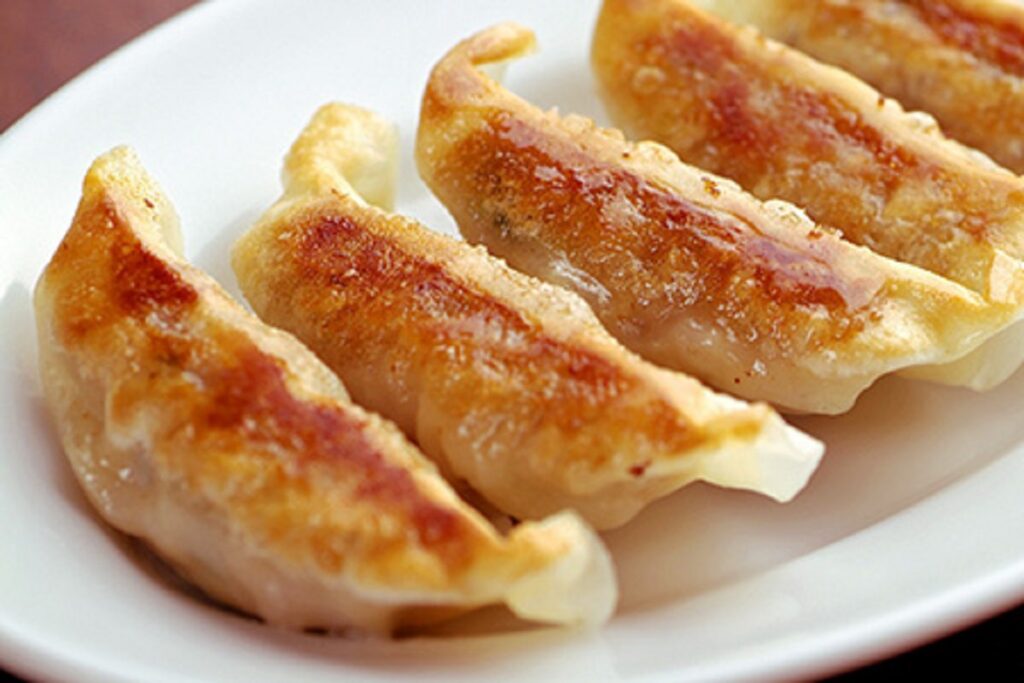

I love Gyoza so much. You can eat it at a casual Chinese restaurant at a reasonable price, 700-1,000 yen per dish with 5-6 pieces. It is a Chinese-style fried dumpling containing minced pork, cabbage, Chinese chive, and garlic. We usually bake the gyoza and eat them. Boiled dumplings are also available. We can make it at home by ourselves, and buy it at a supermarket as well, as deep-frozen food, raw food, and ready-to-eat meal.
9. Ramen
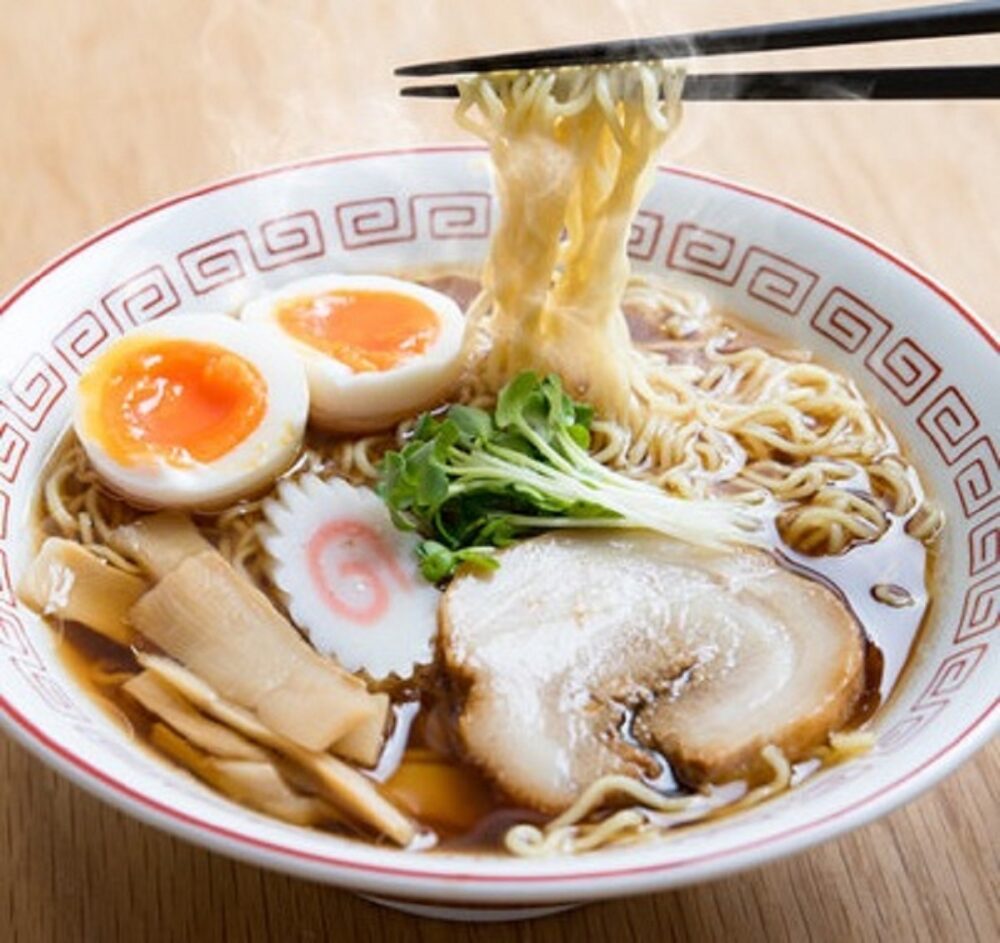
I believe that most tourists know the ramen. It is a noodle dish in a special broth with meat, and different kinds of vegetables or herbs. You can eat it at a ramen specialty restaurant. There are four types of ramen with different soups made from fish or meat.
Those are tastes of Shoyu(soy sauce) , Miso(fermented soybean paste), Shio(salt) and Tonkotsu.
Among the four types of ramen, some shops have straight or frizzled noodles.
One of the main differences between the two is how they intertwine with the soup.
At first glance, it may seem that frizzled noodles are more intertwined with the soup than straight noodles, but in fact straight noodles intertwine better than cfrizzled noodles because there are fewer gaps between the noodles, allowing them to absorb the soup.
In Summer time we can enjoy cold ramen, Hiyashi Chuka, although the above ramens are served with a warm soup.
Larmen is closer to the Japanese pronunciation than as ramen.
9-1. Shoyu ramen
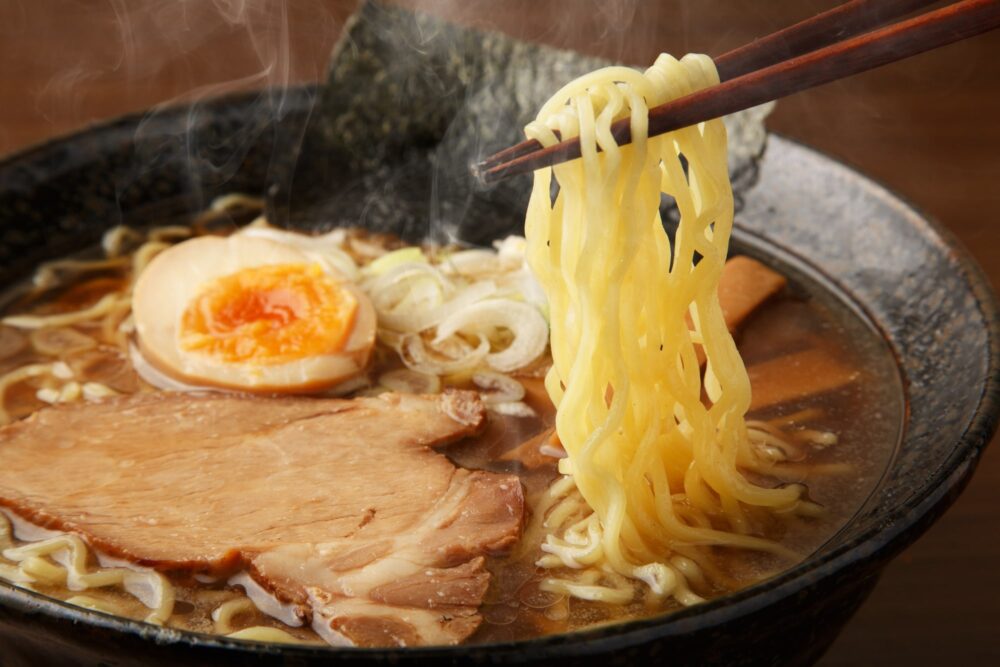
It comes from the Tokyo area. They make the soup with shoyu (soy sauce) and chicken.
Even though it is called salt ramen, it is not so salty and has a thin salty taste and is very tasty.
9-2. Miso ramen
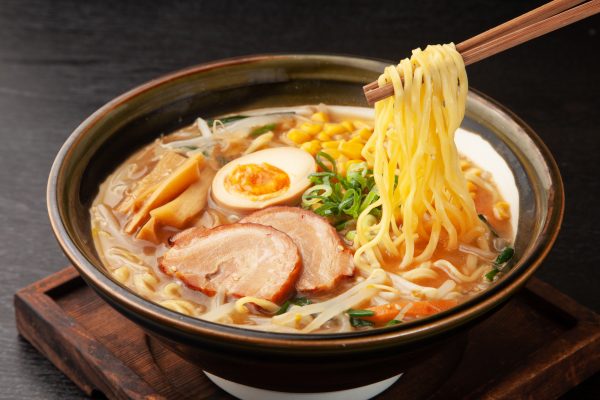
It comes from the Hokkaido island area(North of Japan). They make the broth with miso (fermented soybean paste made from soy sauce), pork, and chicken. Some people want to put a piece of butter and cooked corn. Those are specialty products of Hokkaido.
These days, however, they can be found all over the country, including in Tokyo.
9-3. Shio ramen
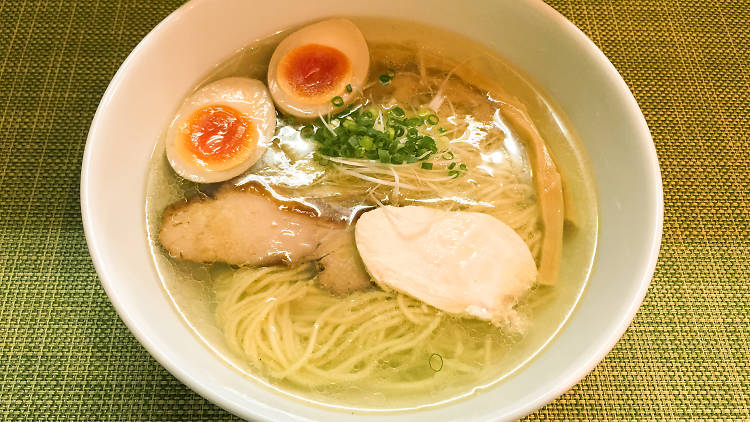
They make the soup with salt, chicken, and fish. We can eat it at every ramen restaurant in Japan. Shio is a Japanese name for salt.
Even though it is called salt ramen, it is not so salty and has a thin salty taste and is very tasty.
9-4.Ton-kotsu ramen
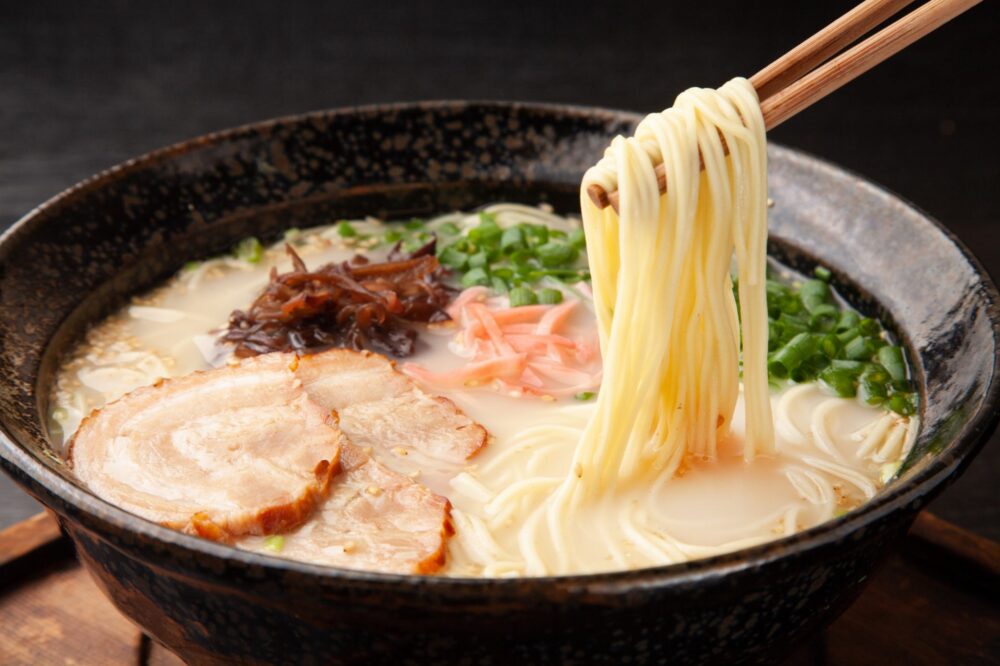
Ton means a pig, kotsu is a bone. They make the soup from pig bone. It comes from Kyushu island(South west Japan). When you ate the noodle up, and the soup remains, you can ask for only the noodle. It is a unique system only for the Ton-kotsu ramen.
The typical toppings for the ramen are char-siu(pork stewed in soy sauce and sugar), memma(seasoned bumboo shorts), boiled egg, laver, long onion, and moyashi(bean sprout), corn, and butter.
9-5. Hiyasi Chuka
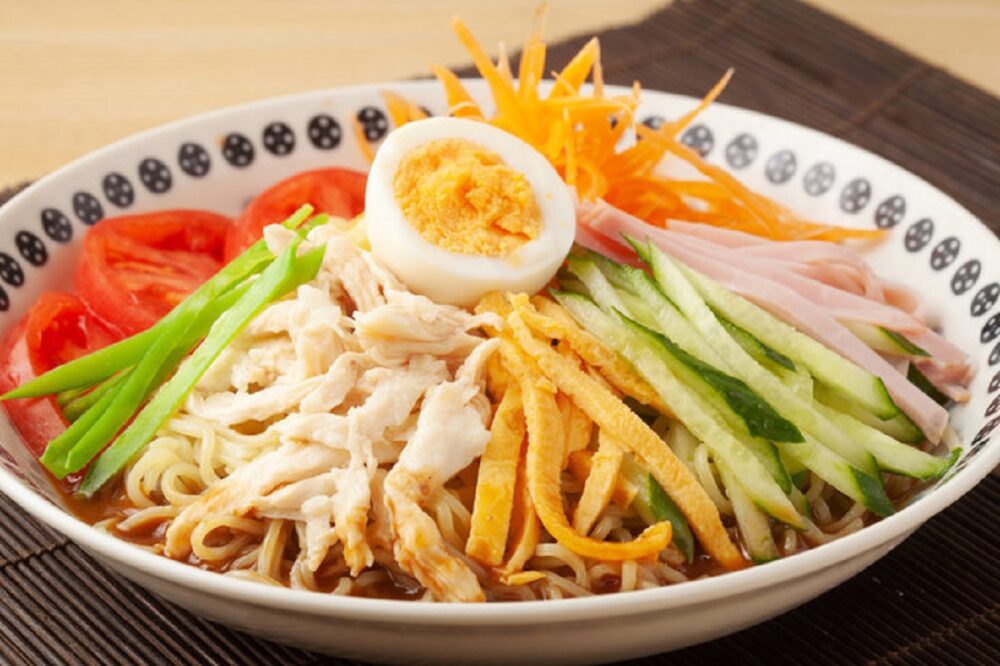
In summer, a type of ramen called “Hiyashi Chuka,” which consists of chilled soup and noodles, becomes popular. Hiyashi Chuka comes in two flavors: soy sauce and sesame sauce. Both flavors contain a bit of vinegar to enhance the refreshing taste. It is very delicious.
10. Oden

It is a Japanese hodgepodge consisting of ingredients such as boiled eggs, daikon, tofu(fermented bean curd), konjac, and processed fishcakes stewed in a light, soy-flavored dashi broth.
It’s very delicious in the winter season with Japanese hot sake. You can eat it at Izakaya or Oden specialty restaurant in the evening.
You can buy them at a convenience store in the daytime at a low price on one item basis and take them out or eat them in the store. The price would be around 700 yen per dish.
For easy preparation at home, we can buy a set of ingredients and a soup for stewing from supermarkets.

11. Okonomi-yaki
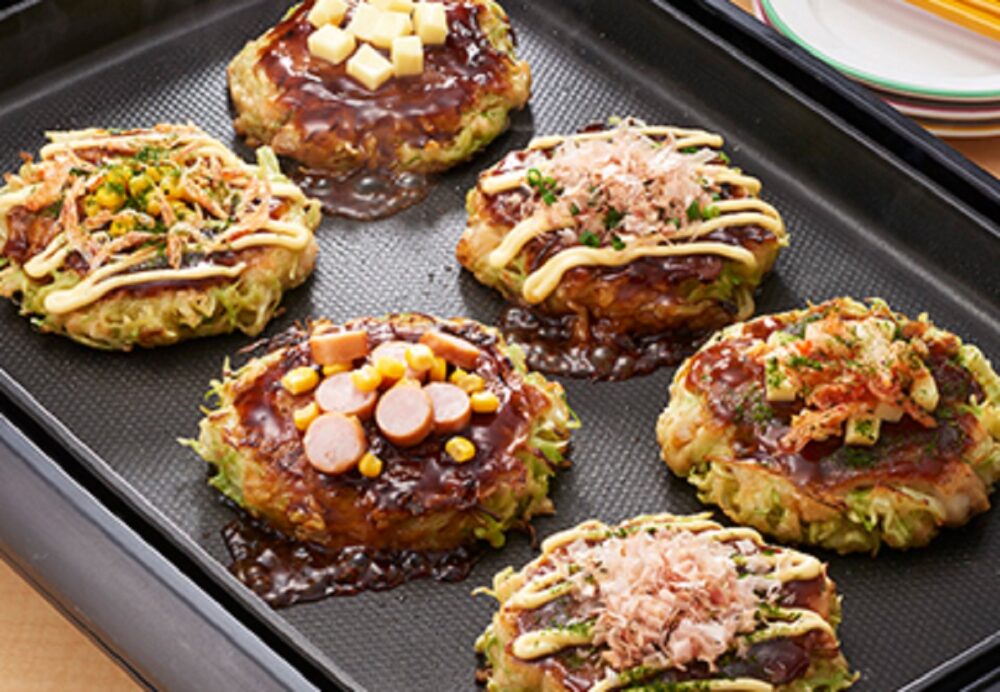

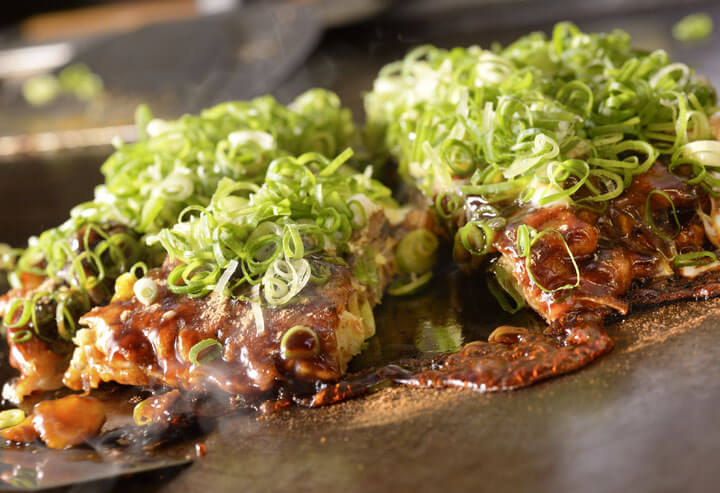
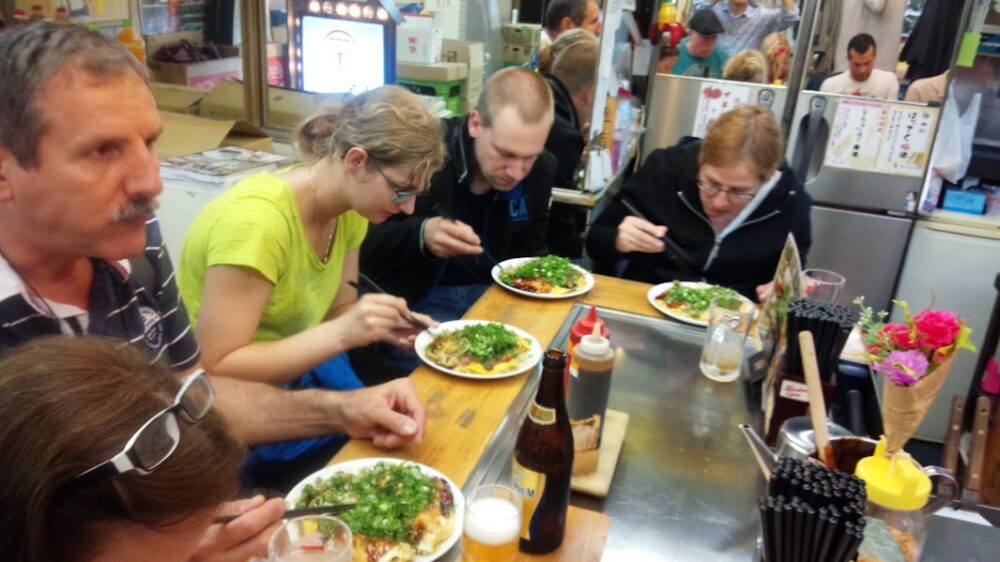
It is a Japanese-style fried pancake with vegetables and pork or seafood. It’s flat and round like a pizza. It is prevalent among Japanese, and very healthy. You can make it by yourself at the restaurant. It is so enjoyable. If it is difficult for you, the staff tells you how to cook it. There are many kinds of the menu of Okonomiyaki, so you can choose your favorite one, excluding pork, or adding cheese. Okonomi means a porite expression of “you like,” and yaki means “bake.” All tourists from overseas whom I brought them some sightseeing points loved to eat it so much, women and men, young and senior.
12. Teriyaki or Misoni
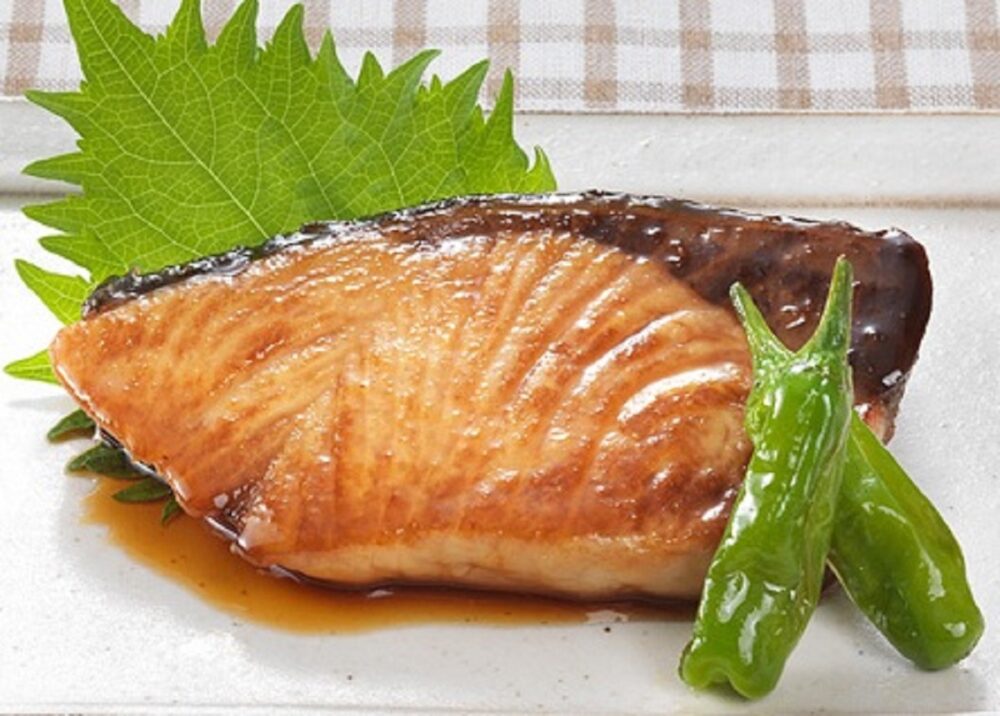
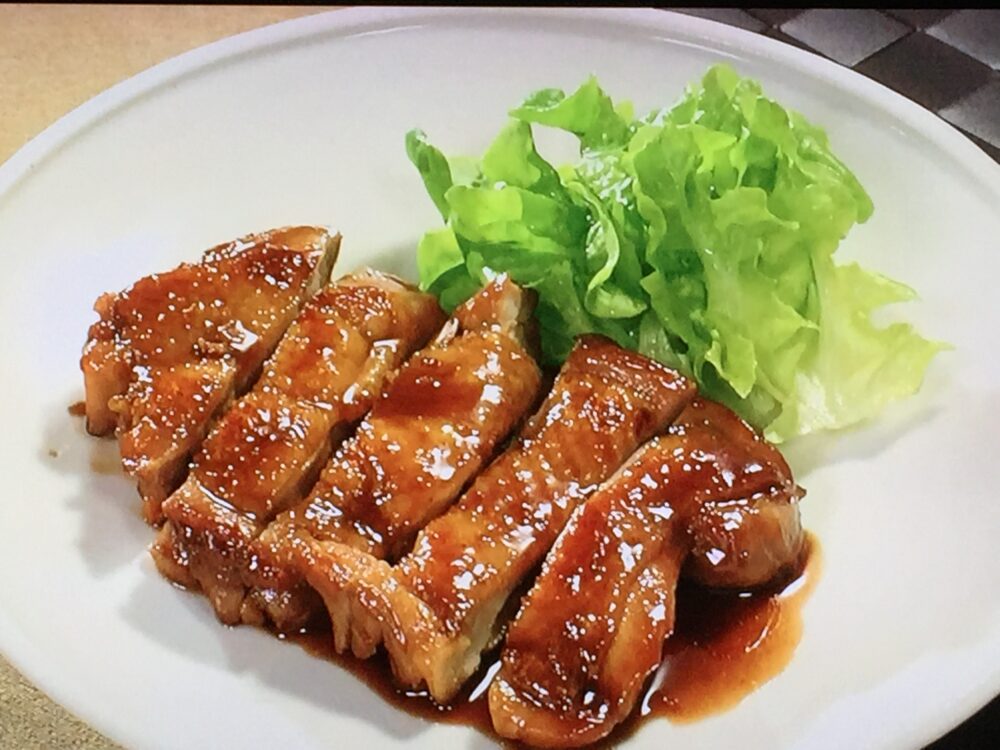
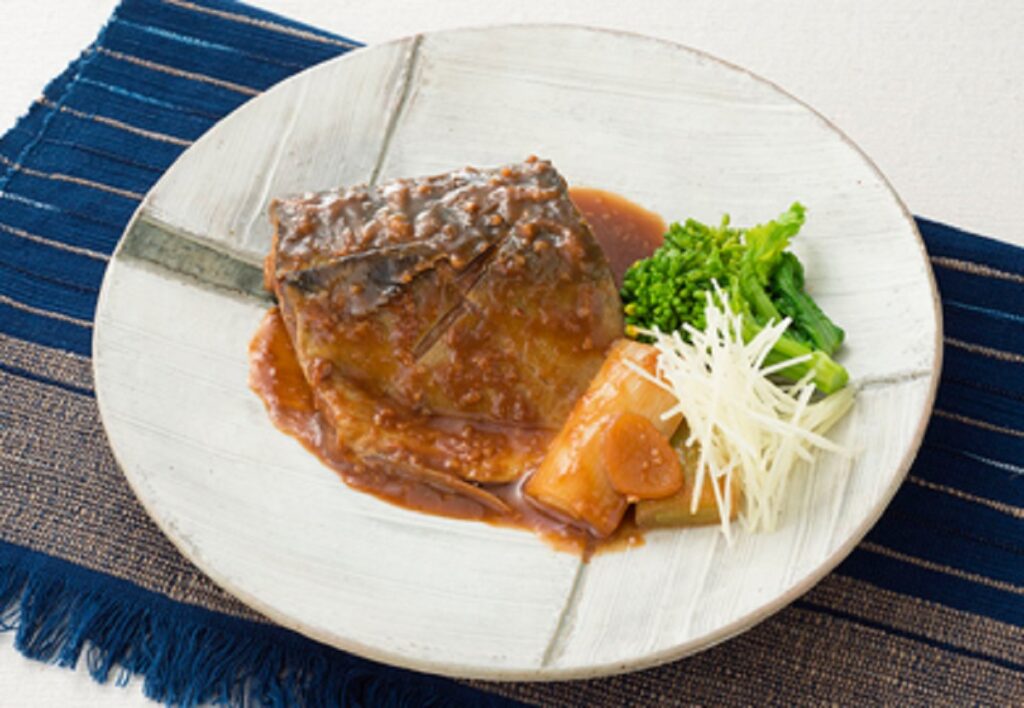
Teriyaki is a dish using a mixed sauce of sugar and soy sauce. We use the sauce for chicken, fish, and other materials.
Misoni is a cuisine of mackerel simmered with miso and sugar. Miso is a fermented paste of soy sauce. It is so delicious to eat Teriyaki of something and Misoni of some fishes with hot steamed rice.
Those are Japanese favorites. You can eat them at a Japanese restaurant as a meal or nibbles when drinking at Izakaya. The price of a set menu, including a bowl of hot rice, miso soup, and Japanese pickles, would be around 1,000 yen.
13. Tori-no-kara-age (Torikara)
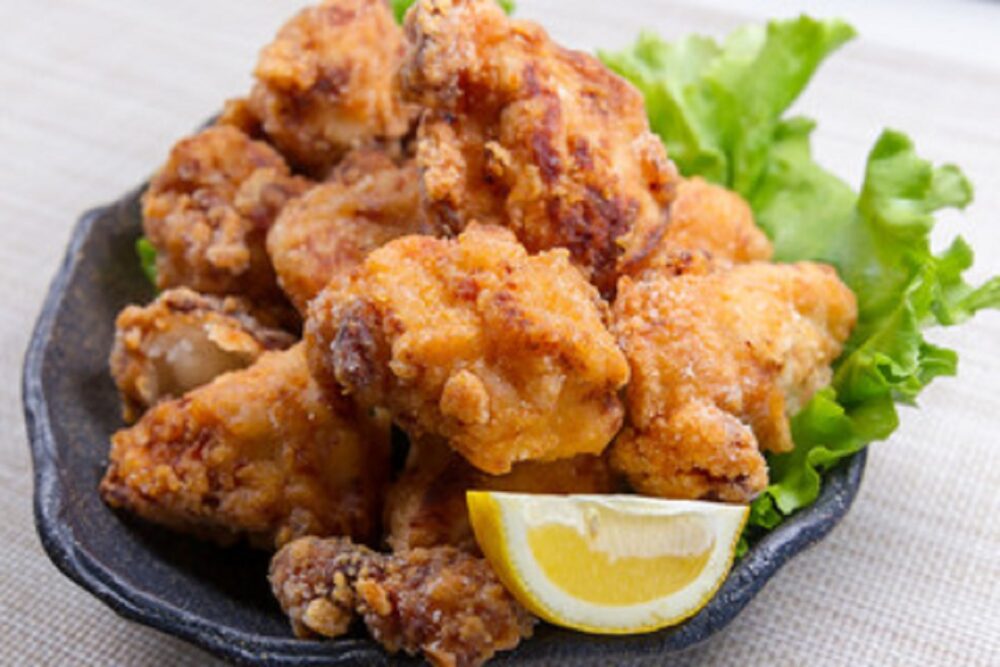
It is a Japanese deep-fried chicken thigh, similar to KFC. The taste is different depending on home and restaurant.
You can try it at most Izakaya which is a Japanese-style casual restaurant and bar. You can enjoy all kinds of drinks and food there. The price is about 500-1,000 yen per dish with 5 or 6 pieces.
14. Buta-Shogayaki
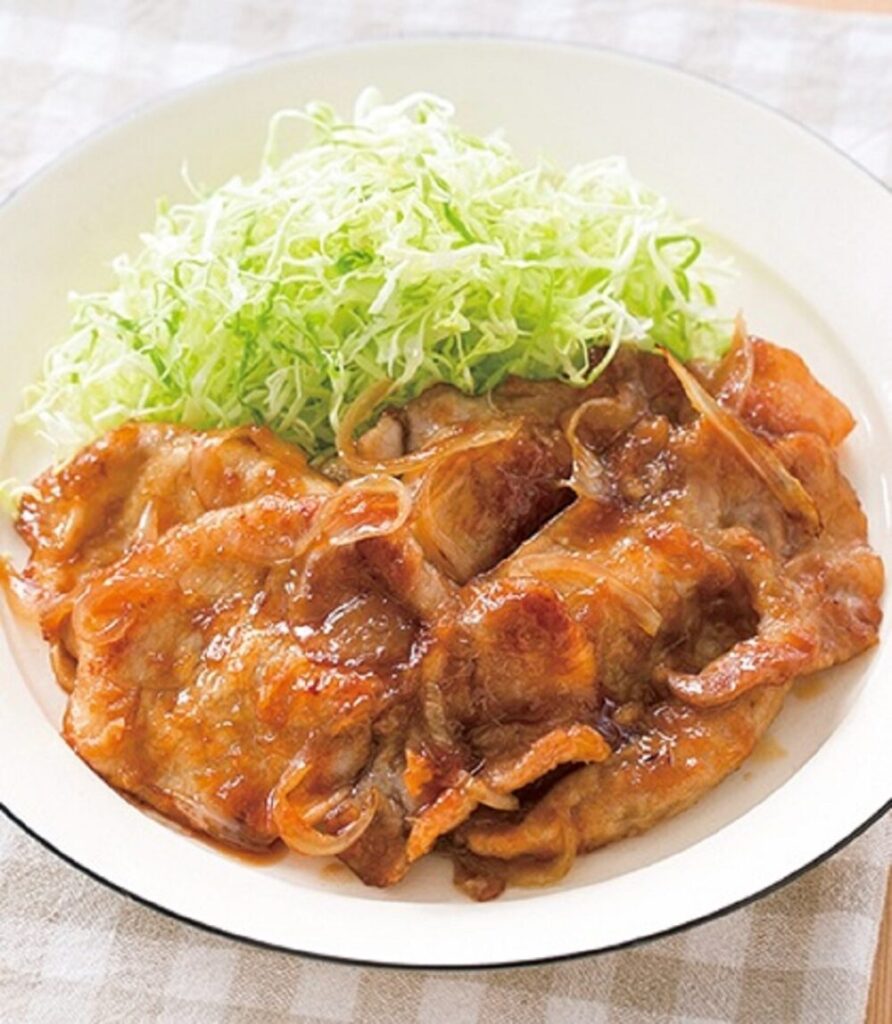
It is a ginger grilled pork. Buta means a slice of pork. Shoga is ginger. Yaki is a grilling.
We add flour to the pork and cook it with soy sauce and sugar.
You can eat it at a casual restaurant where students and young adults come at a lunch time. Japanese young people love to eat so much, especially for lunch. The price is about 1,000 yen with miso soup and pickles.
15. Yakisoba
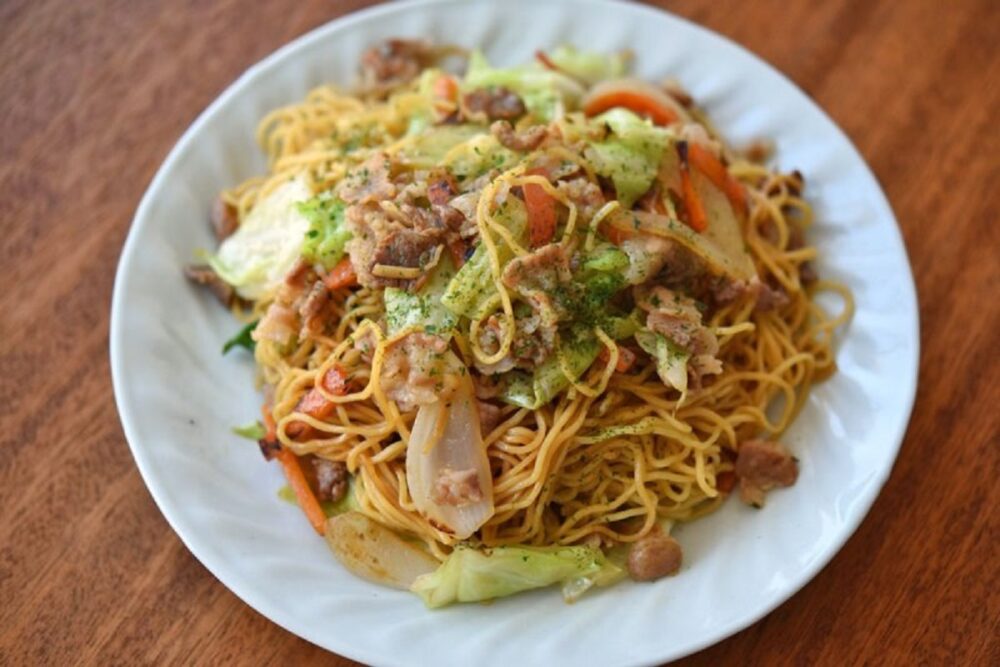
It is a classic Japanese stir fry noodles dish with pork and vegetables like cabbage, onion, carrot, sweet green pepper, and so on.
People season it with a sweet and savory sauce similar to oyster sauce. It is an ubiquitous meal among the Japanese.
The price would be 700-1,000 yen. You can eat it at a casual restaurant. You can also buy instant yakisoba at a supermarket or convenience store with a price ranging from 100 – 300 yen. You pour hot water into the instant yakisoba container and put the lid on. After three minutes, you can eat it.
16. Katsucurry
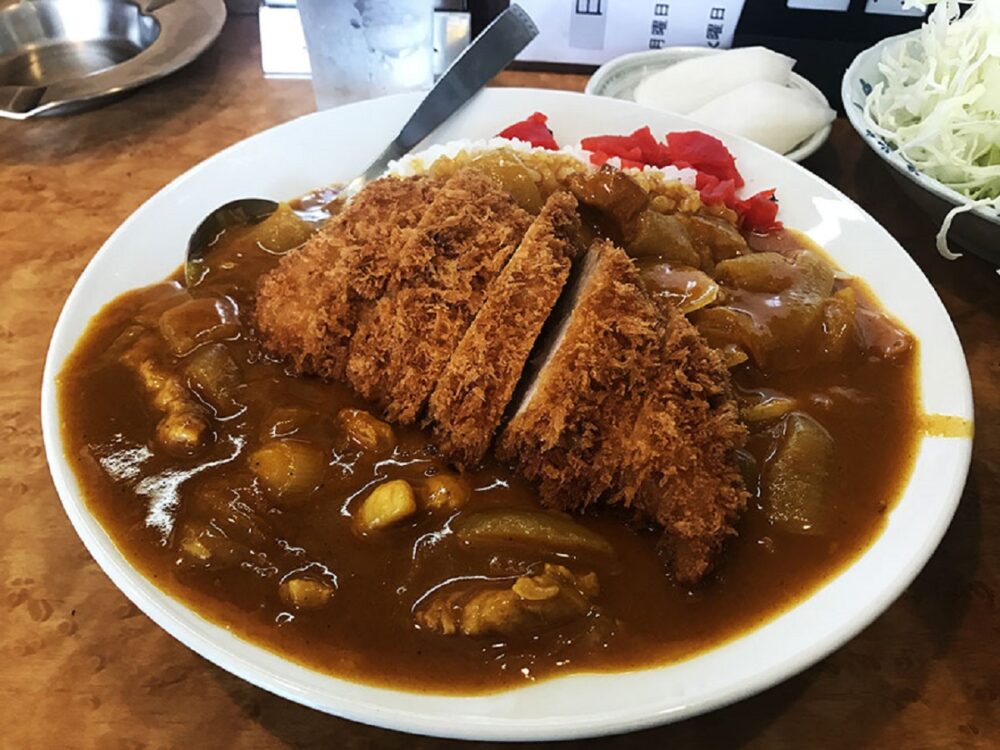
Katsukare is a Japanese dish that has a pork cutlet, which is served with rice and curry.
Young Japanese love to eat it at lunch. The price would be around 1,000 yen.
17. Omuretsu(Omelet)
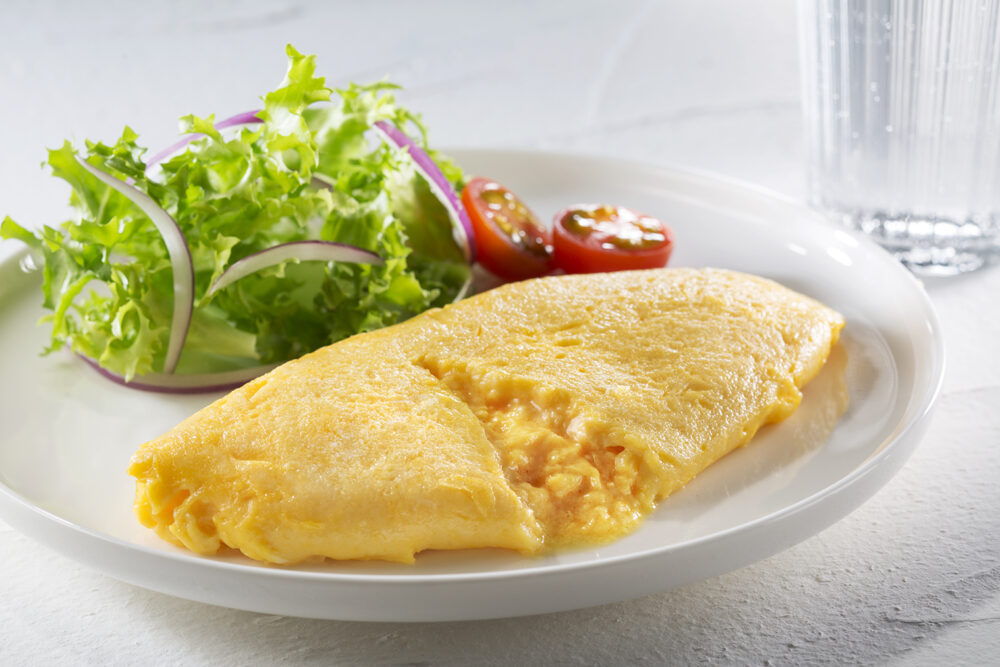
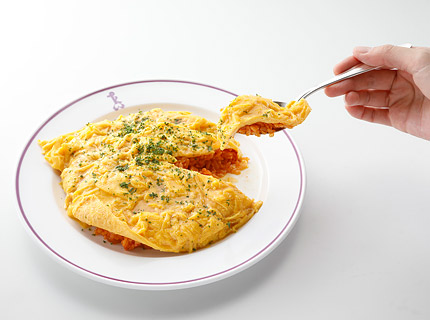
It’s an omelet stuffed with rice. Sometimes there are also chicken and vegetables inside. We usually put ketchup on it. It’s popular with kids. The price would be around 1,000 yen.

18. Mochi
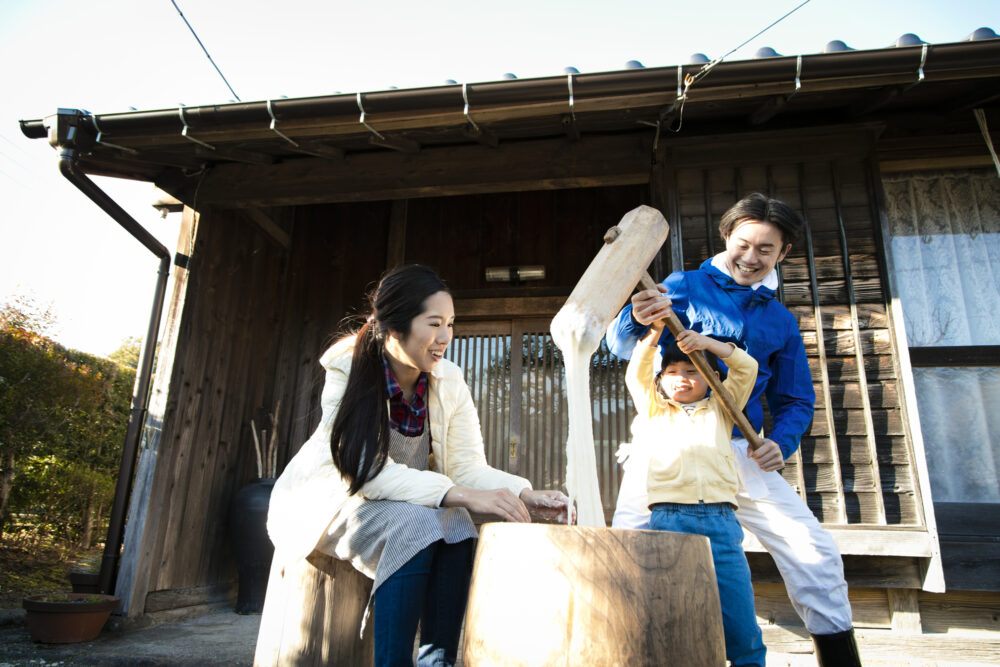
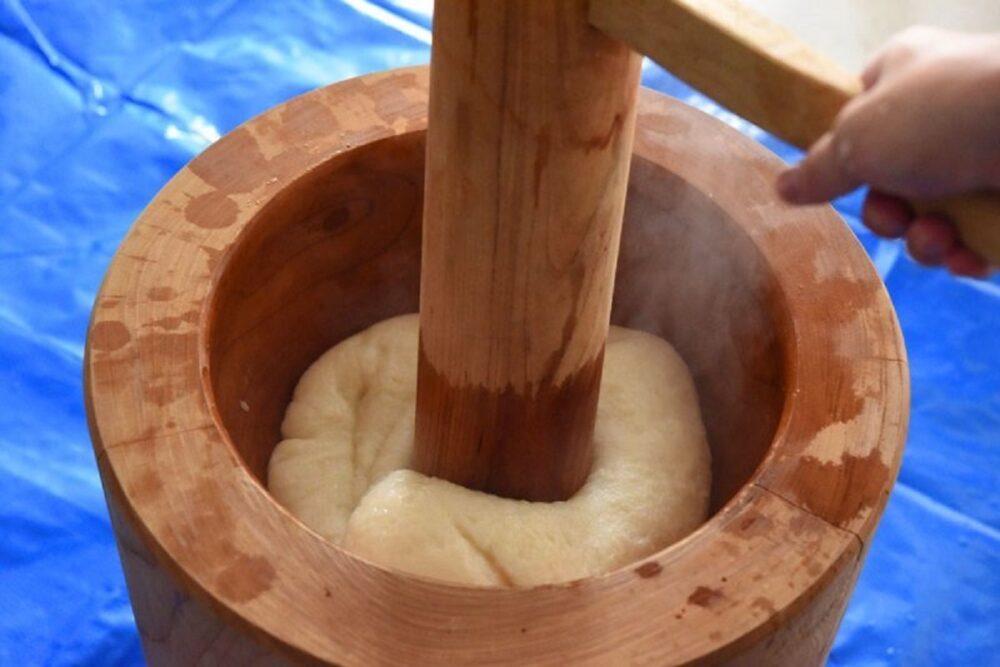
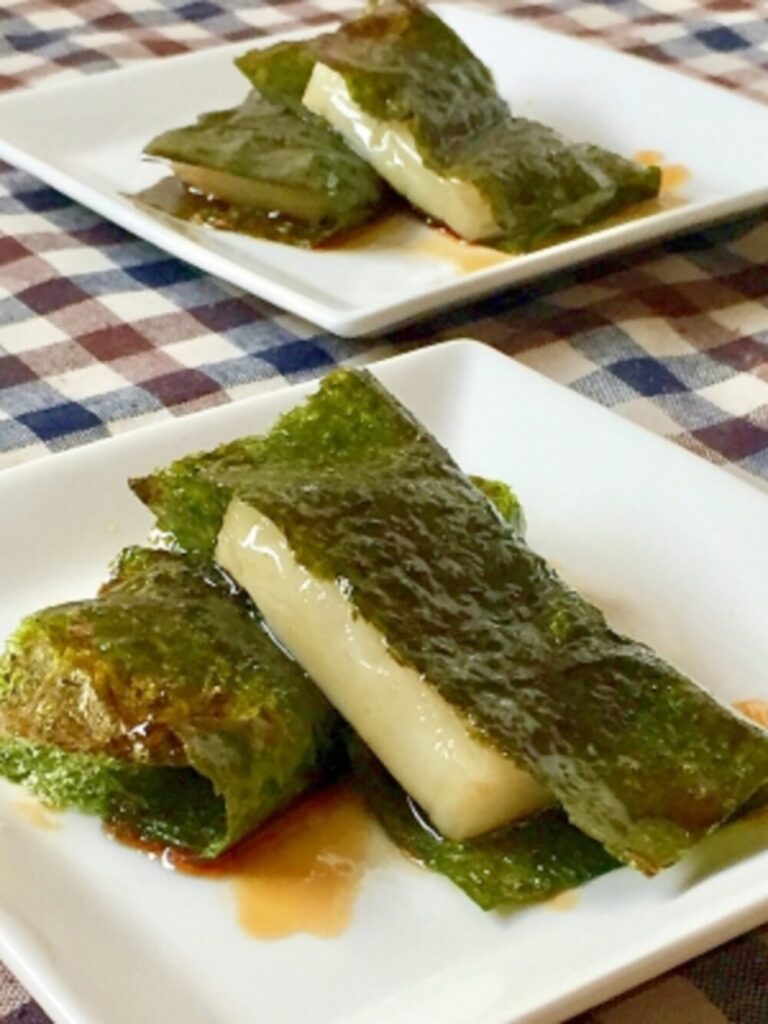
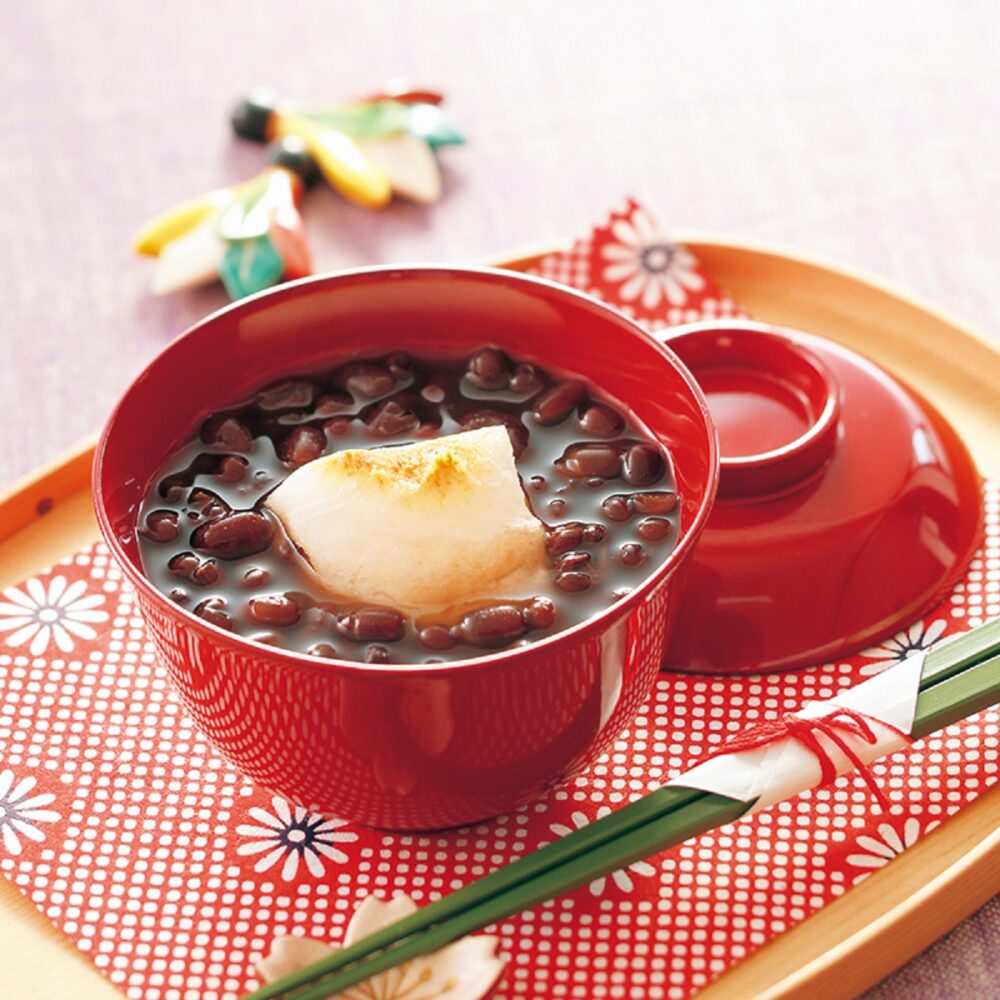
It is a rice cake made from glutinous rice with a sticky consistency. Making mochi used to be a good family program. The family’s parents pound the steamed rice in a mortar and make it flat round cakes(radius about 50 cm) or flat square sheets(about 49x60cm). The thickness is about 15mm. Nowadays, the young family uses an electric machine for steaming and pounding. Just after pounding, my younger sisters loved to eat it with a mixed powder of sugar and yellowish soybean powder or sweet soybean paste. The size is about like an egg.
We also make a Zoni with the mochi. We eat it during the New Year holidays. It is a special soup with rice cake, chicken, or fish-paste cake slices and vegetables, topped with trefoil leaves and citron peel for flavor. Shiruko is another dish. It is a sweet bean-paste soup with a piece of mochi or rice-flour dumplings. You can eat it at a traditional Japanese sweet restaurant. Yakimochi is simple cooking. We cut the mochi into a small size, about business name card. We can store it for approximately a month at room temperature. People bake it and dipped in soy sauce and eat it wrapped with a laver.
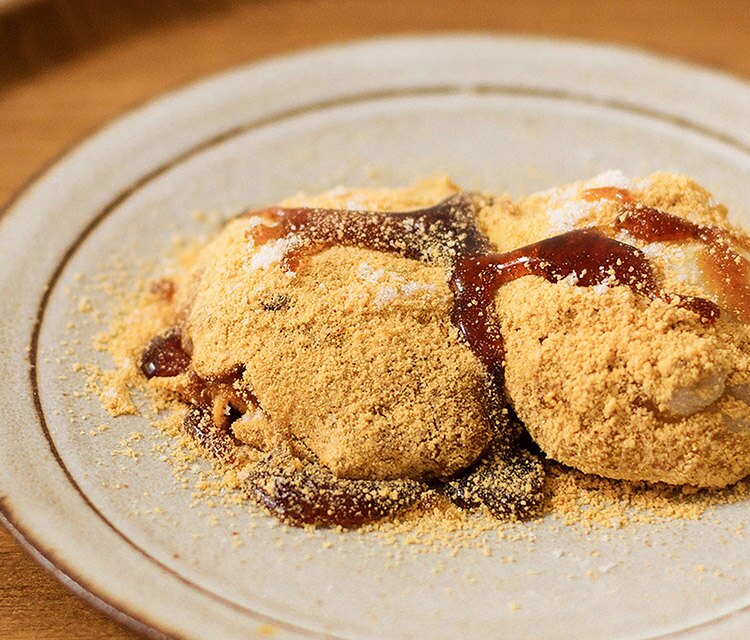
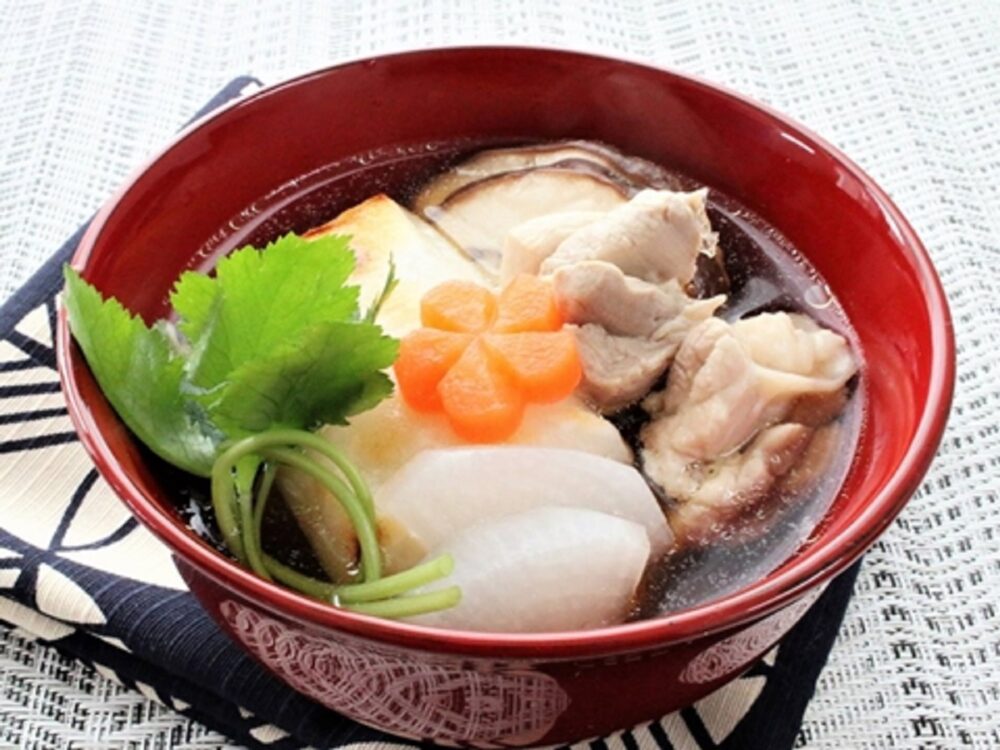
18-1 Daifuku
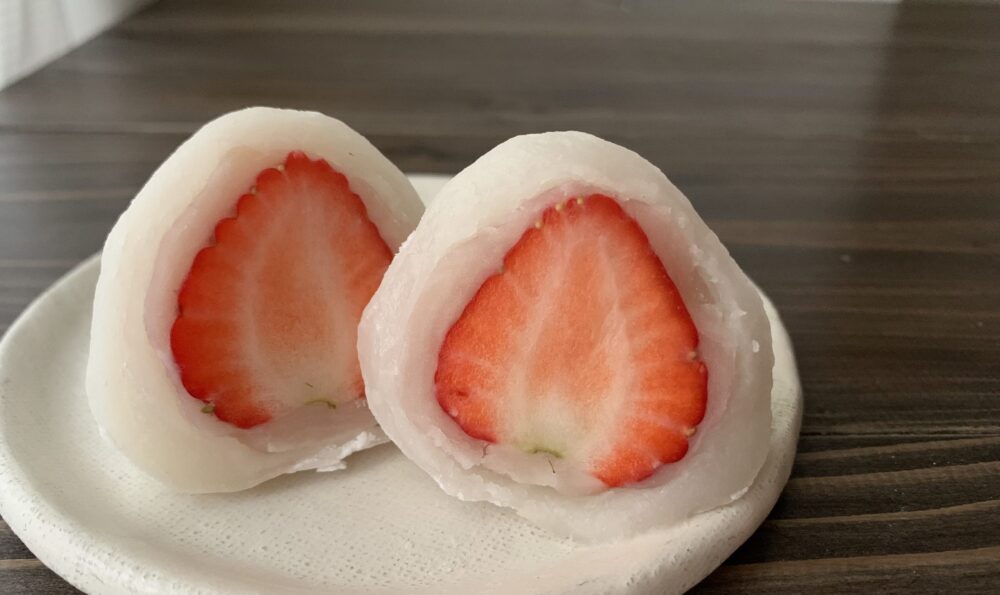
Daifuku is a traditional Japanese confection consisting of a small round mochi (glutinous rice cake) stuffed with a sweet filling, most commonly anko (sweetened red bean paste). The outer layer is soft and chewy, while the filling provides a contrasting texture and flavor. There are also variations with different fillings such as fruit, custard, or chocolate.The price of one Daifuku is about 100 – 500 yen.
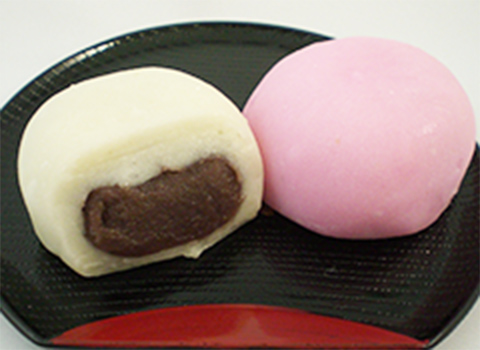
19. Sukiyaki
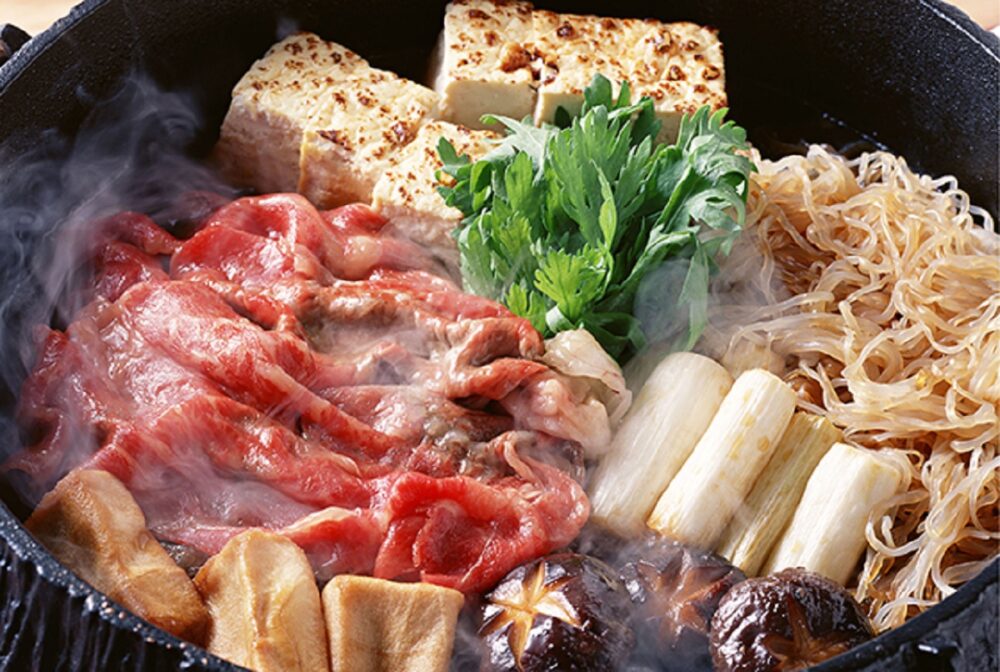
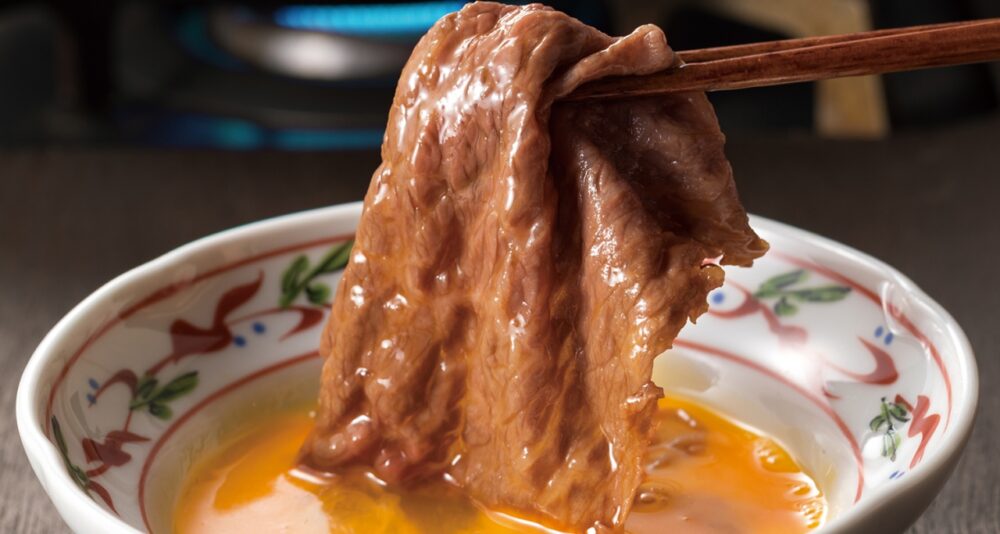

You may know the sukiyaki song, which is not related to the sukiyaki immediately. But actually, sukiyaki is one of the typical hot pot dishes of Japan.
Put an adequate quantity of warishita, a Japanese stock, into a heated pot for sukiyaki, then cook the meat, various vegetables, and bean curd together in it. Shiitake mushrooms and Japanese leeks are essential for sukiyaki. If you come to a first-class restaurant to eat the sukiyaki, you have to pay about 10,000 yen per person. But you come to Yoshinoya, a nationwide reasonable chain restaurant with the menu, you can eat a simple set menu of sukiyaki at 800 yen but delicious. It is for beginners.
20. Shabushabu
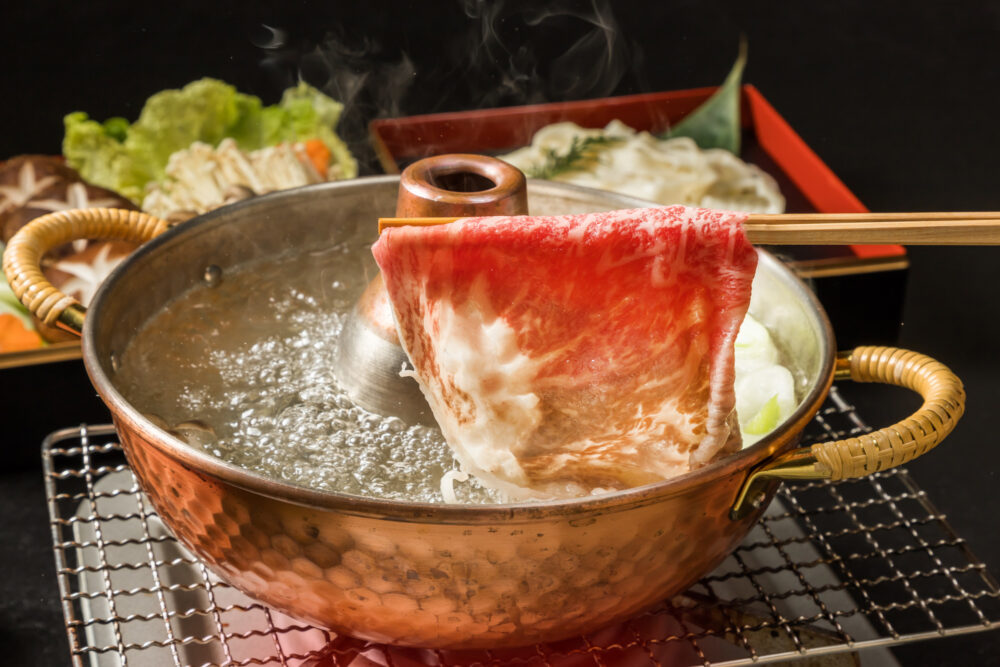
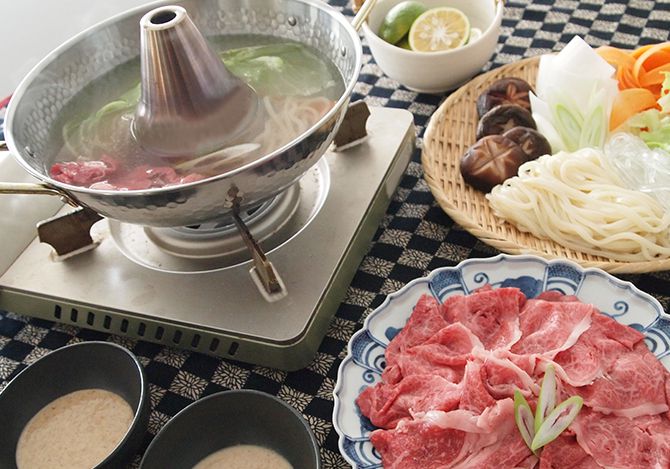
Shabu-shabu is a traditional Japanese hotpot dish. It consists of thinly sliced meat (usually beef or pork) and vegetables that are briefly cooked in boiling water or broth. The name “shabu-shabu” comes from the sound made when the ingredients are swished back and forth in the hot liquid.You serve it by yourself with sauce.
The Shabushabu is not a casual dish. It is expensive. So, we enjoy the Shabushabu on a particular day. The price would be around 10,000 yen per person. The low price of Shabushabu is available at another restaurant like Shabuyo.
The meat and vegetables are cooked quickly, ensuring they remain fresh and flavorful. Once cooked, the ingredients are typically dipped in sauces such as ponzu (a citrus-based soy sauce) or sesame sauce before eating. Shabu-shabu is a popular dish, especially during the colder months, and is often enjoyed as a communal meal with family and friends.
The price would be 3,000-10,000 yen depending on a restaurant and quality of meat.
21. Yakiniku
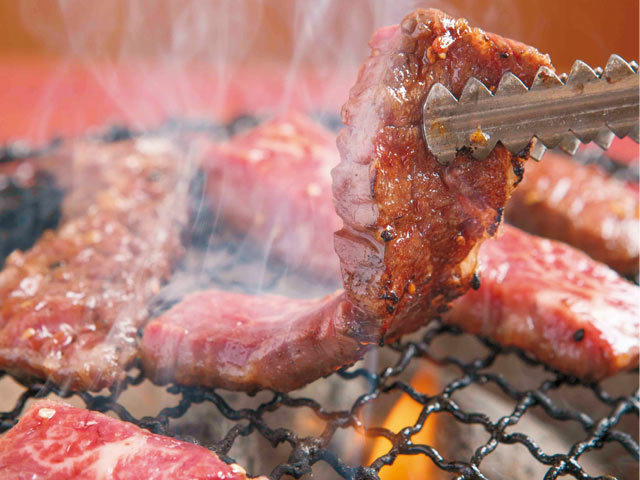
A yakiniku is a Japanese term that literally means “grilled meat.” It refers to a popular style of cooking and eating meat, typically beef, pork and chiken that is sliced into small pieces and grilled at the table. The concept is similar to Korean BBQ, but with its own unique Japanese twist.
Japanese people love yakiniku, and it can even be considered a national dish. During lunchtime, you can have a satisfying meal for around 1,000 yen per person.
The yakiniku is not just about the food; it’s also a social experience. It’s common for friends and family to gather around the grill, enjoying the cooking process together. It’s a leisurely meal that encourages conversation and bonding.
The raw meat is brought to the table and cooked by the diners themselves. This interactive experience allows people to cook their meat to their preferred level of doneness.
After grilling, the meat is often dipped in various sauces. The most common is a soy-based sauce called tare, which is sweet and savory. There might also be other sauces like garlic or sesame.
The grilled meat is usually shared among everyone at the table. Since you cook the meat yourself, you can take your time and enjoy the meal at a relaxed pace.
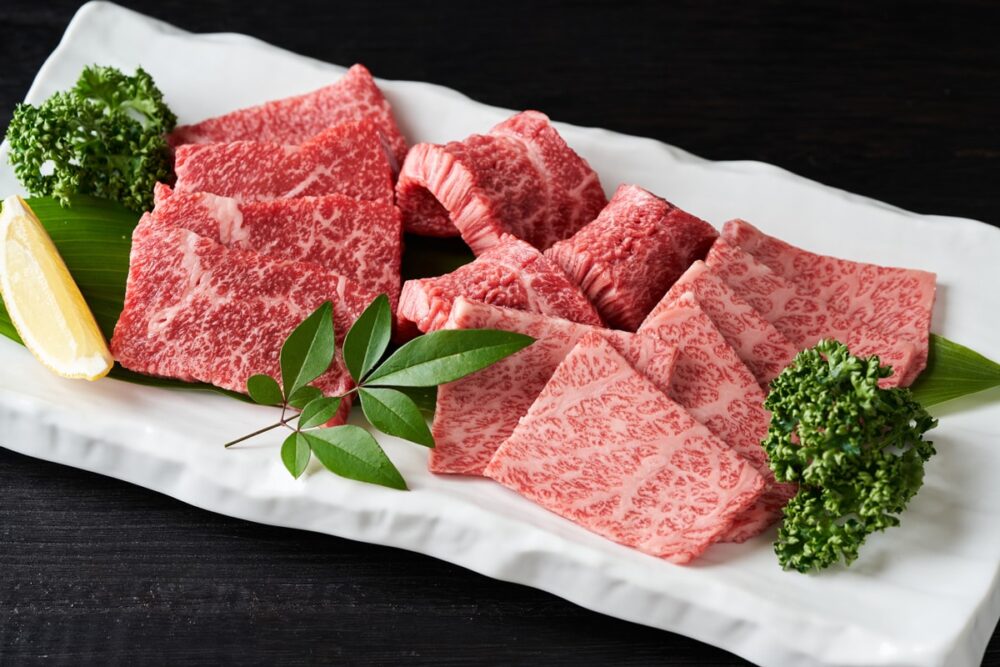
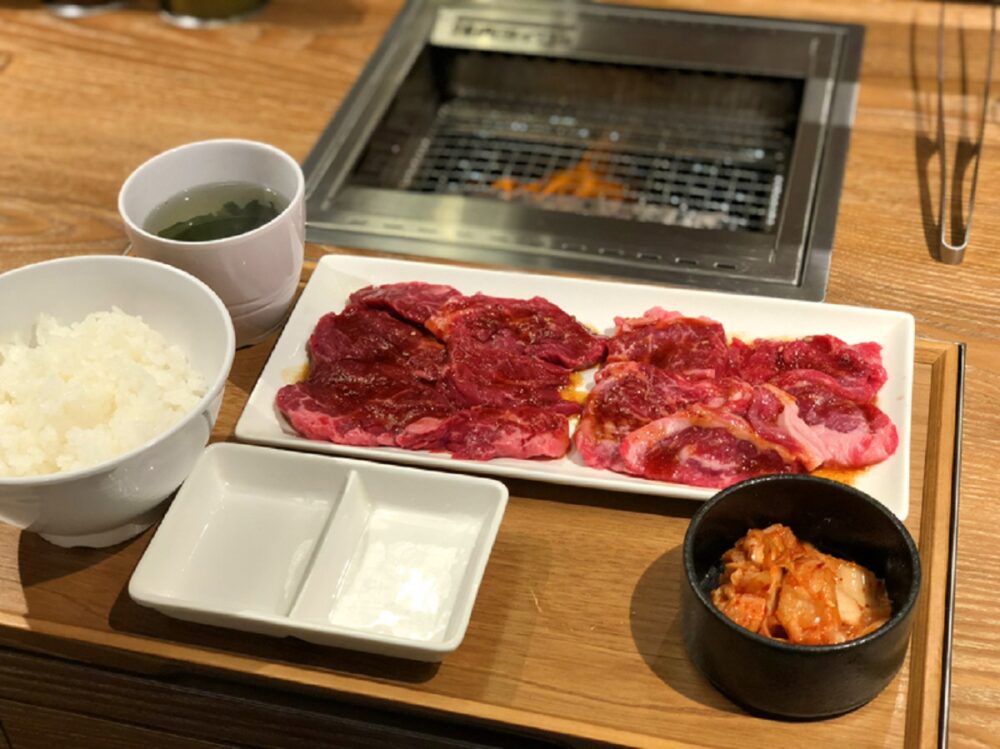
22. Japanese Hamburg Steak

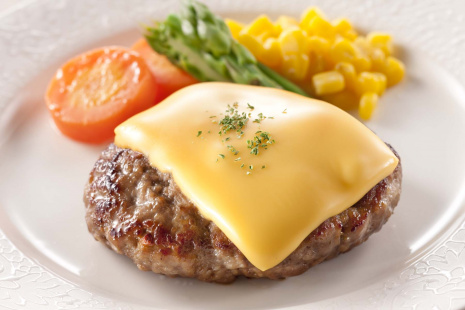
The Japanese are skilled at modifying and improving things in their own unique way. The Japanese hamburg steak introduced here is an example of this, originally derived from the American hamburger patty, but enhanced with various ingredients and flavors. It is often served as a set menu with white rice and soup.
You can enjoy this dish in any type of restaurant, from casual eateries to high-end establishments.
I used to think this dish originated from abroad. However, after guiding many foreign tourists, I realized that this dish doesn’t exist in other countries. Even if it does, it’s not as juicy, tender, and delicious as the Japanese hamburg steak. Foreign tourists visiting Japan are often pleasantly surprised by how tasty it is.
When you visit Japan, this is a dish you should definitely try. In a casual restaurant, it would typically cost between 800 and 1,500 yen per serving. The Japanese pronunciation is “hambergu.”
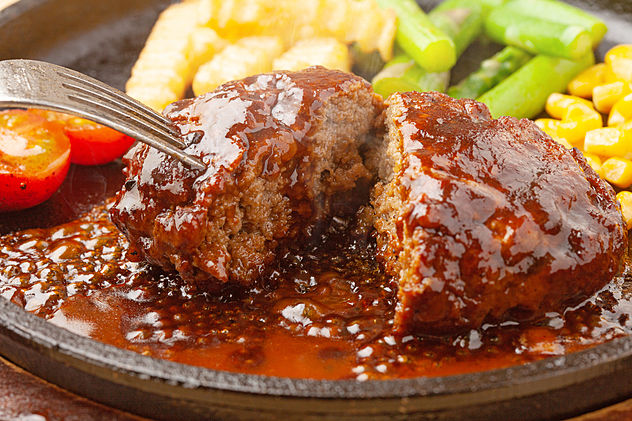
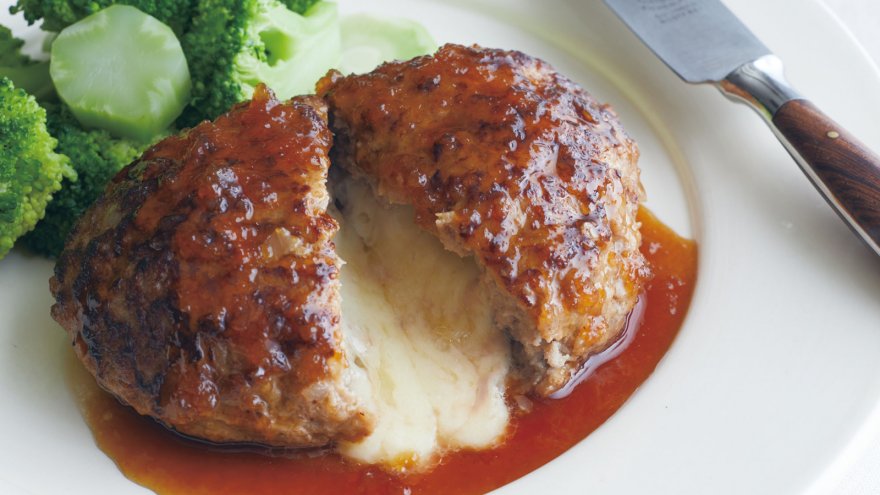
23. Casual Restaurants in Japan
There are many casual restaurants in Japan, where you can enjoy delicious Japanese dishes at a reasonable price. Some popular chains include Sukiya, Yoshinoya, Matsuya, CoCo Ichibanya and Syabuyo.
23-1. Sukiya
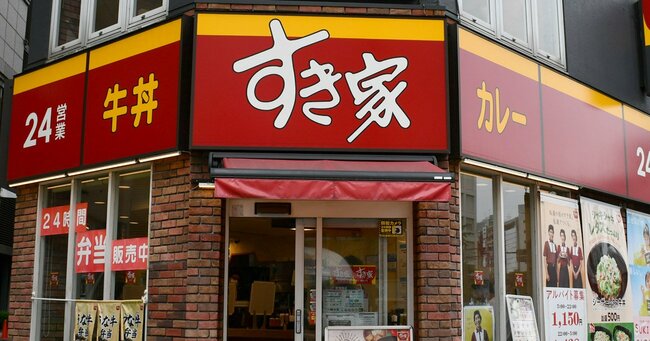
Known for its gyudon (beef bowl), Sukiya offers a variety of rice bowls, curry, and other dishes. There are 1,941 locations nationwide.
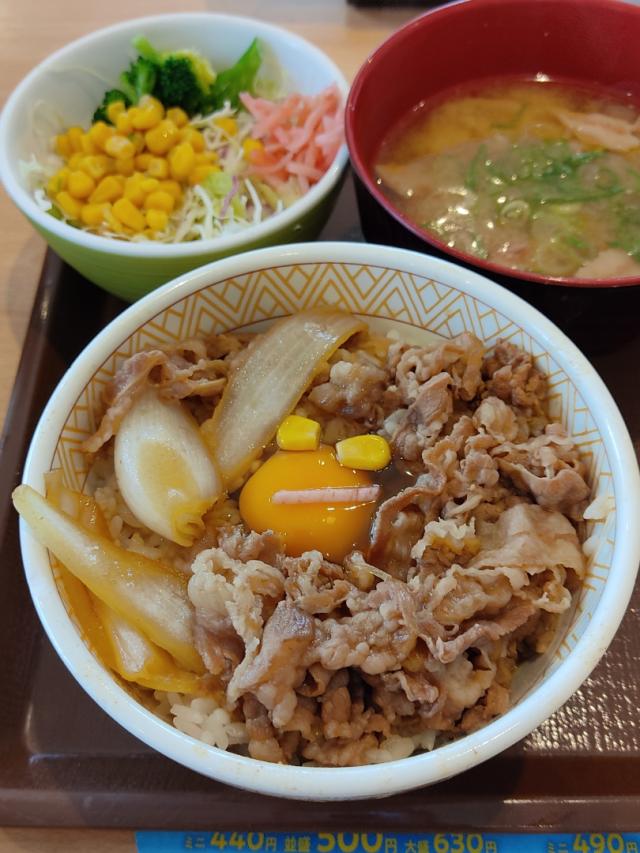
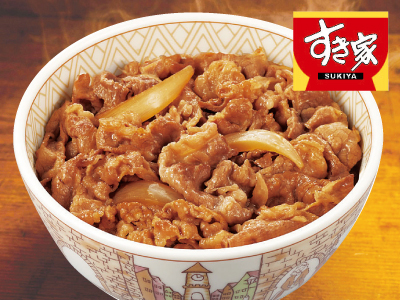
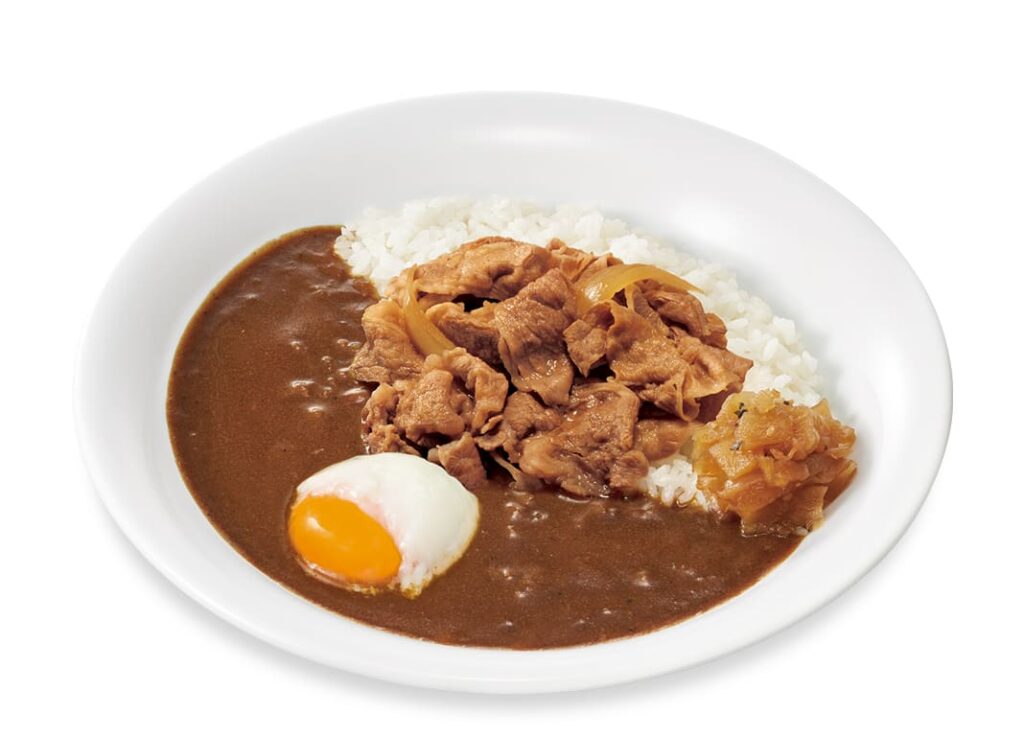
23-2. Yoshinoya

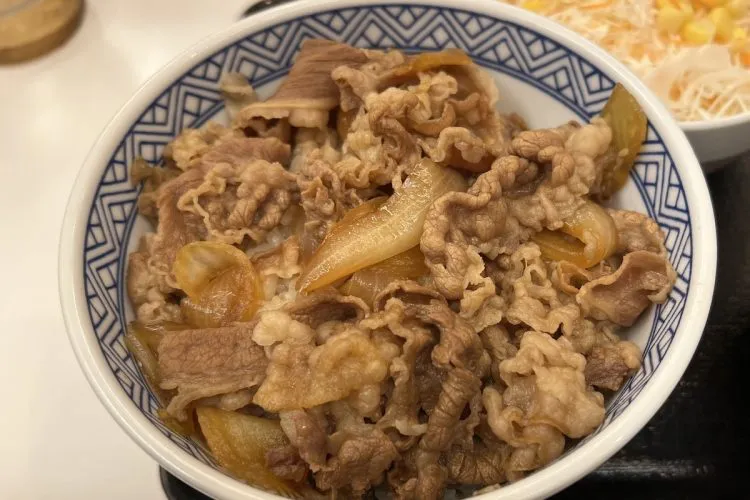
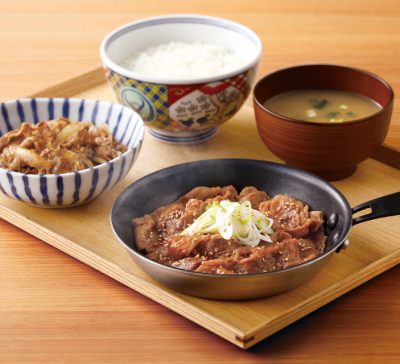
Famous for its gyudon, Yoshinoya also serves a variety of Japanese-style rice bowls and set meals.
The taste of Yoshinoya’s beef bowls is very similar to that of sukiyaki. The taste of beef bowls from other chains is almost identical.
There are 1,197 locations nationwide.

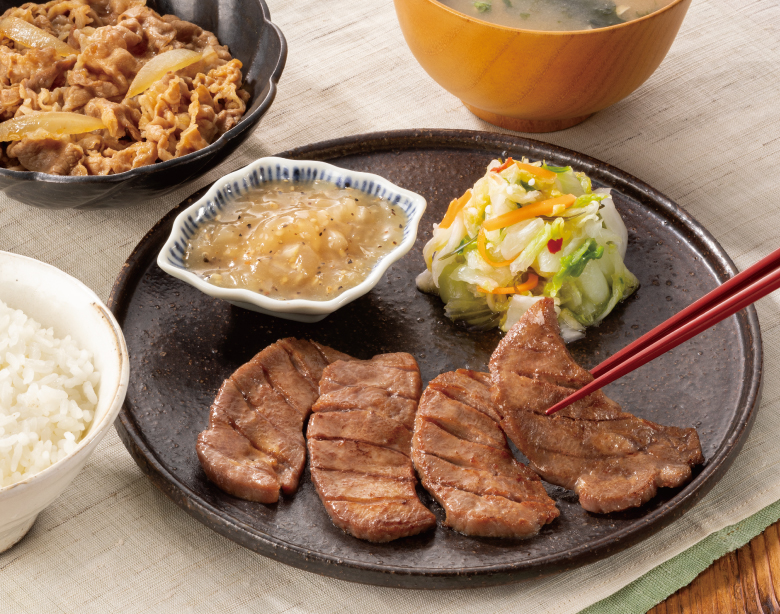
23-3. Matsuya

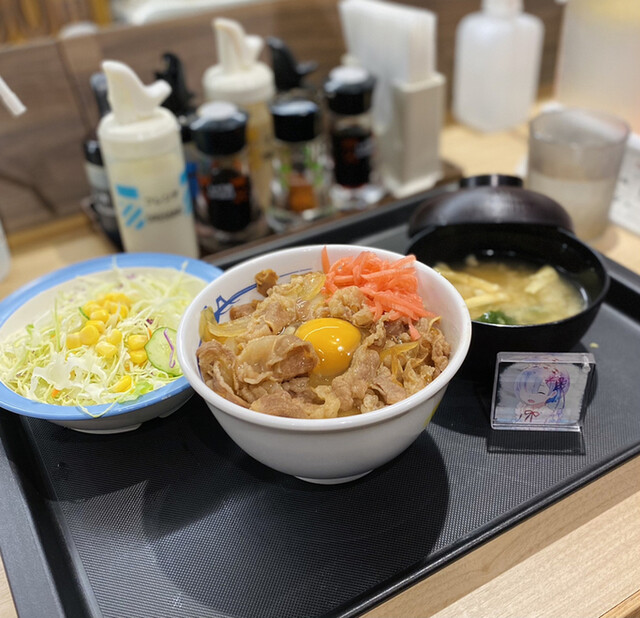
Matsuya offers a wide range of Japanese dishes, including gyudon, curry, and set meals with miso soup.There are 1,003 locations nationwide.
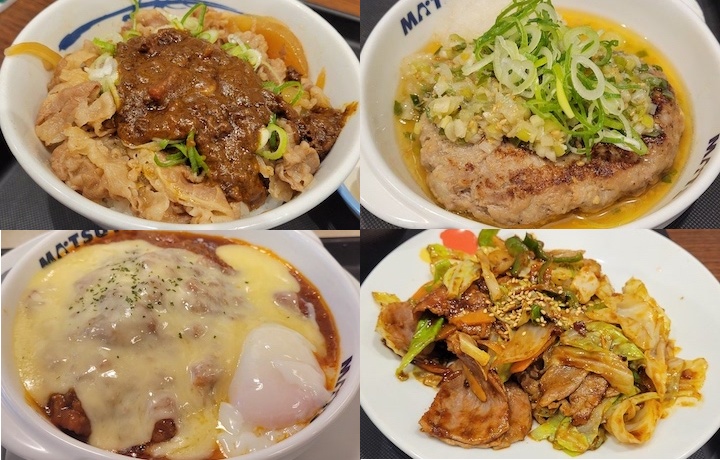

23-4. Coco Ichibanya, curry house

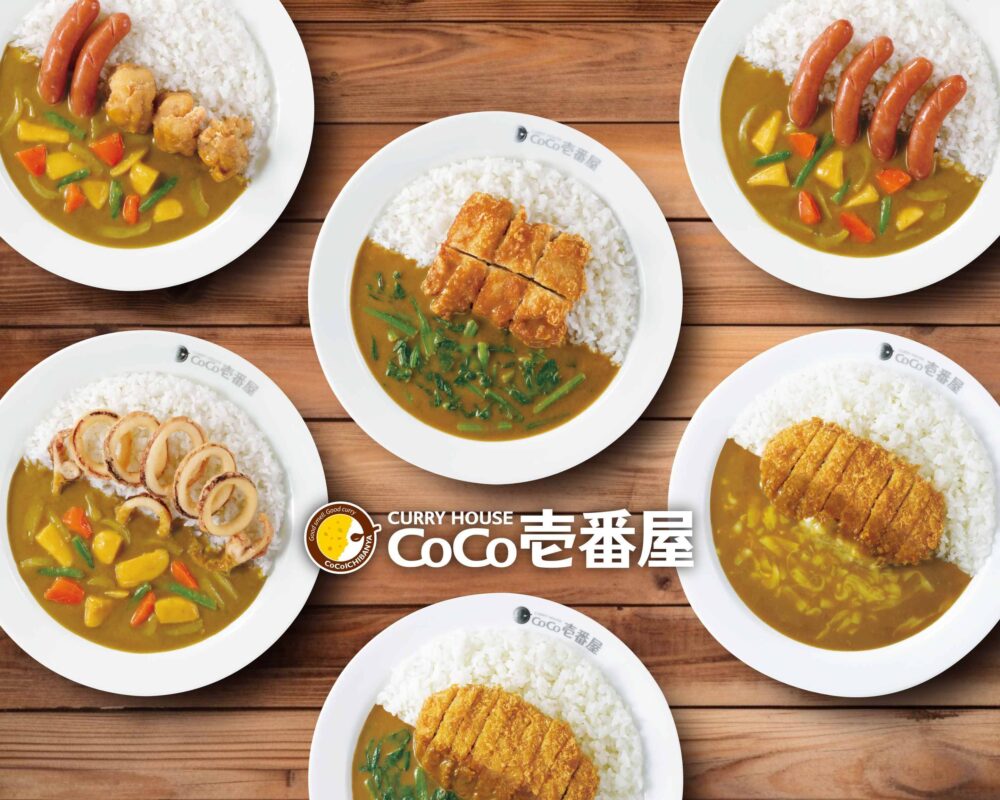

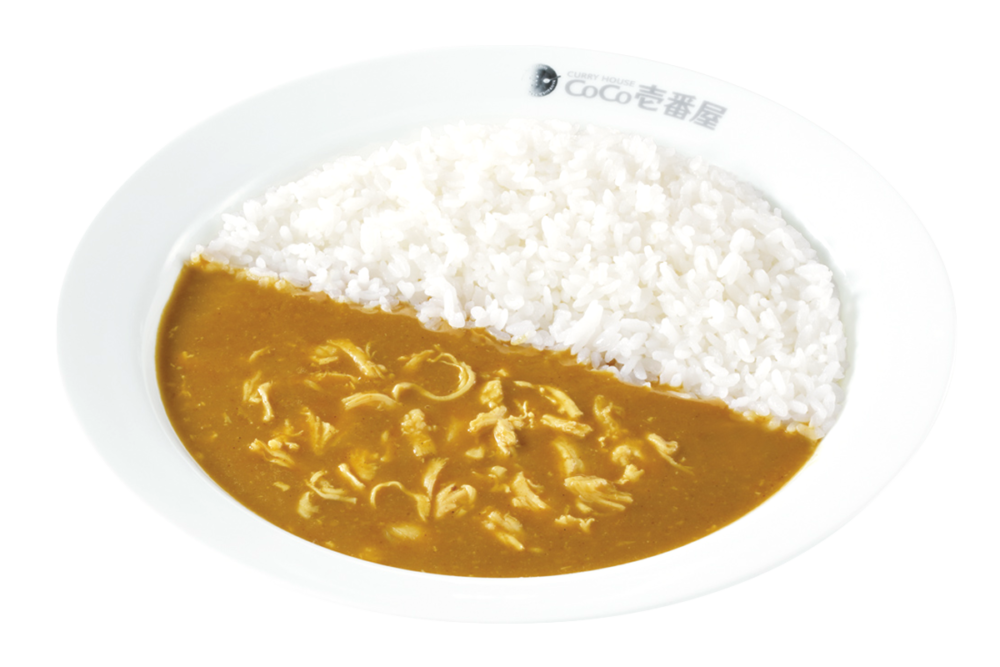
The Coco Ichibanya specializes in Japanese curry rice with a variety of toppings and spice levels to choose from.
These restaurants are popular among locals and tourists alike for their quick service and affordable prices.There are 1,200 locations nationwide.
23-5. Syabuyo(syabusyabu)
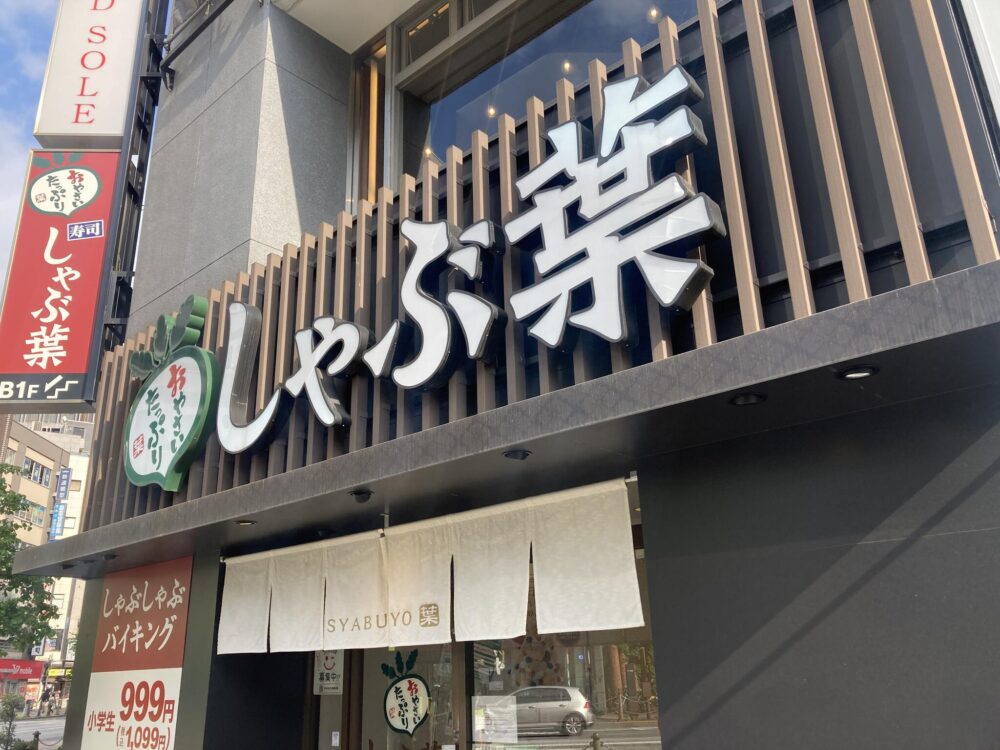
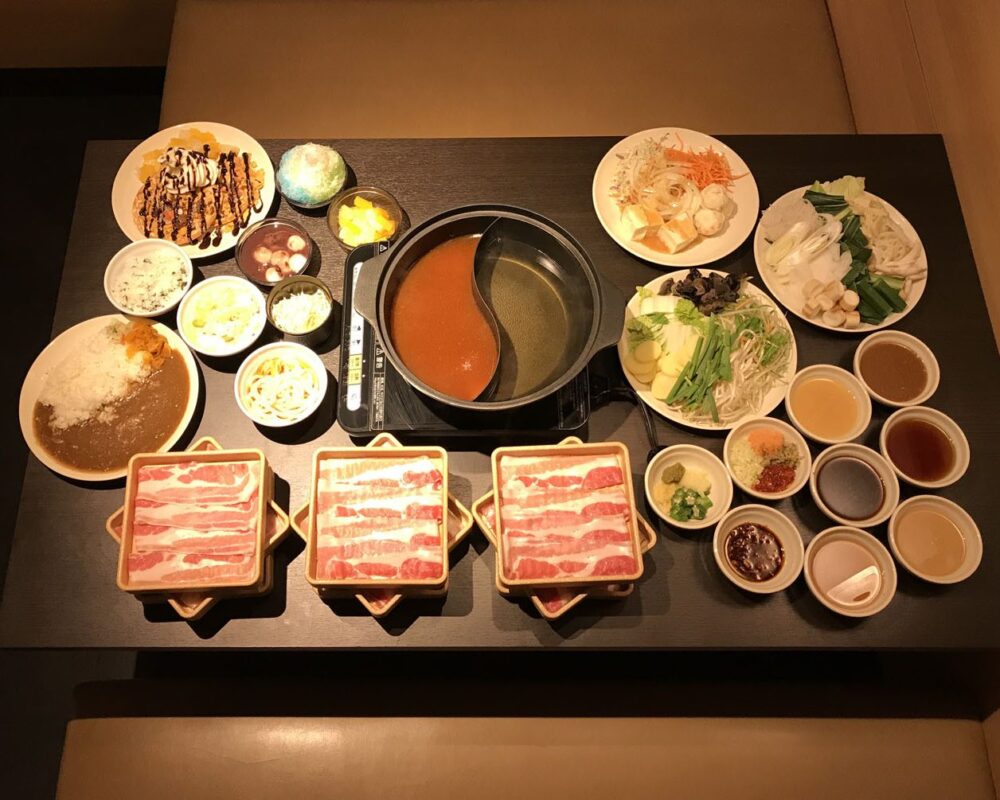
Syabuyo is a specialty shabu-shabu restaurant where you can enjoy all-you-can-eat delicious meat and fresh vegetables. You can enjoy unlimited servings within a time limit. The meat selection includes beef, pork, and chicken, with various cuts available for each type of meat.
You can freely choose your own broth, sauces, and condiments for the meat.
You can also select fresh vegetables for your salad. Additionally, there is a wide range of side dishes, drinks, and sushi.
The desserts you can make yourself are also popular.
Prices vary depending on whether it is a weekday lunch, weekday dinner, weekend lunch, or weekend dinner. The prices also vary based on the type of meat you choose, ranging from approximately 1,600 yen to 5,000 yen. Weekday lunch prices are the most affordable.
There are 280 locations nationwide. Deatails are here.
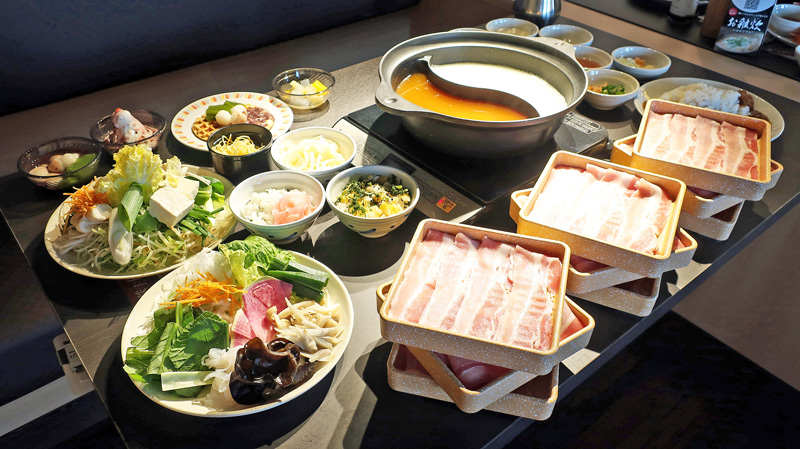
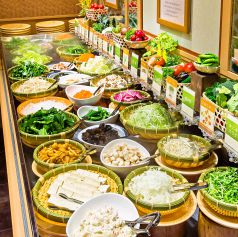
24. Super Market

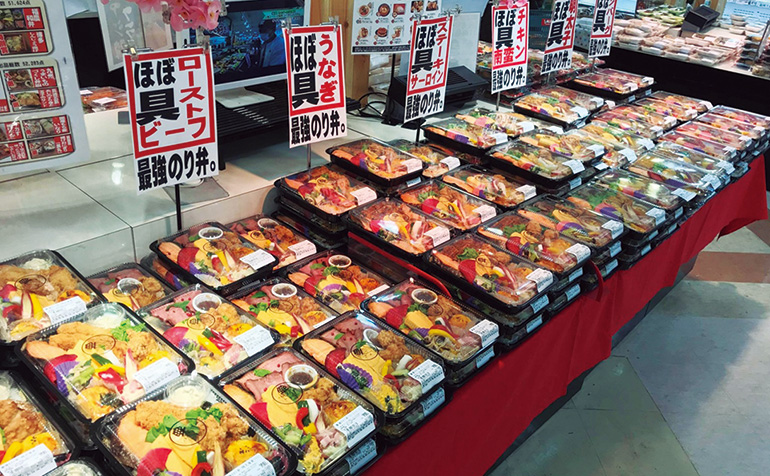

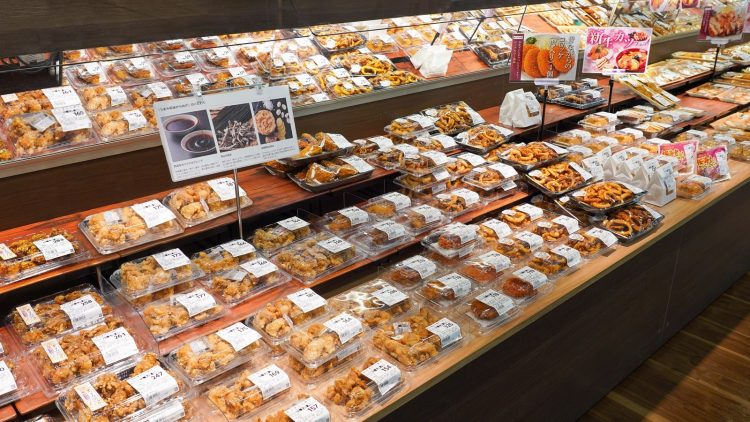
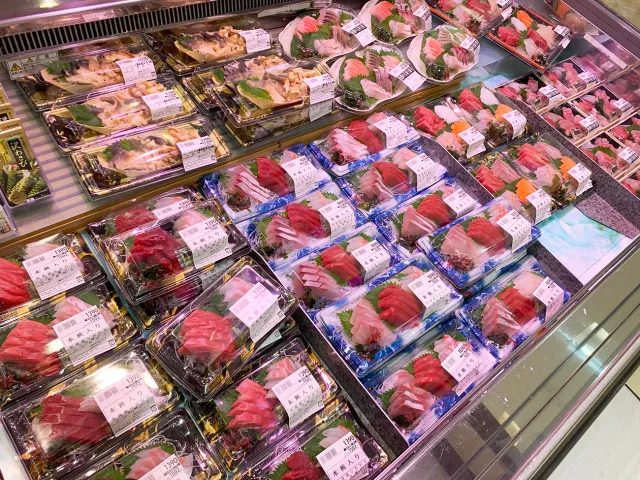
We can call it a Treasure Trove of Traditional Japanese Dishes.
Japanese supermarkets offer a wide variety of traditional dishes and ingredients, making it easy to enjoy Japanese cuisine at home. Some popular items include.
Japanese supermarkets are a great place to discover new dishes and ingredients, and they often have a wide range of products to suit different tastes and dietary preferences.
25. Epilogue
I hope this guide has given you a good overview of the best casual dishes in Japan. Whether you’re dining at a restaurant or cooking at home, these dishes are sure to provide a delicious taste of Japanese cuisine.
Thank you for taking the time to read this guide. I hope you enjoy your culinary adventures in Japan!

